UniFormation GKTWO Review: With W230 and D265 Post Processing Kit
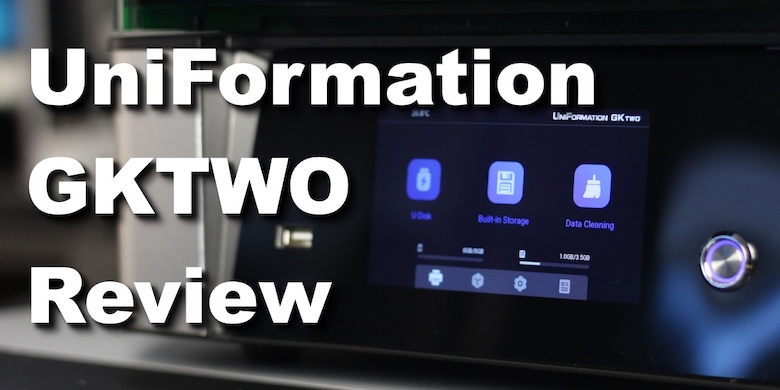
UniFormation might not be as popular as other 3D printing companies that make resin printers. But the GKTWO resin printer is quite interesting, and combined with the dedicated ultrasonic wash station and curing station makes it a compelling solution.
In this article, we will check out the GKTWO to see if it’s worth buying if you are looking for a more professional resin printing setup.
UniFormation GKTWO Shipping and Packaging
The UniFormation GKTWO comes in a cardboard box with ample foam protection on the sides, and plastic corners for even better protection. The same can be said for the D265 Resing Curing Station and the W230 Ultrasonic Cleaner.
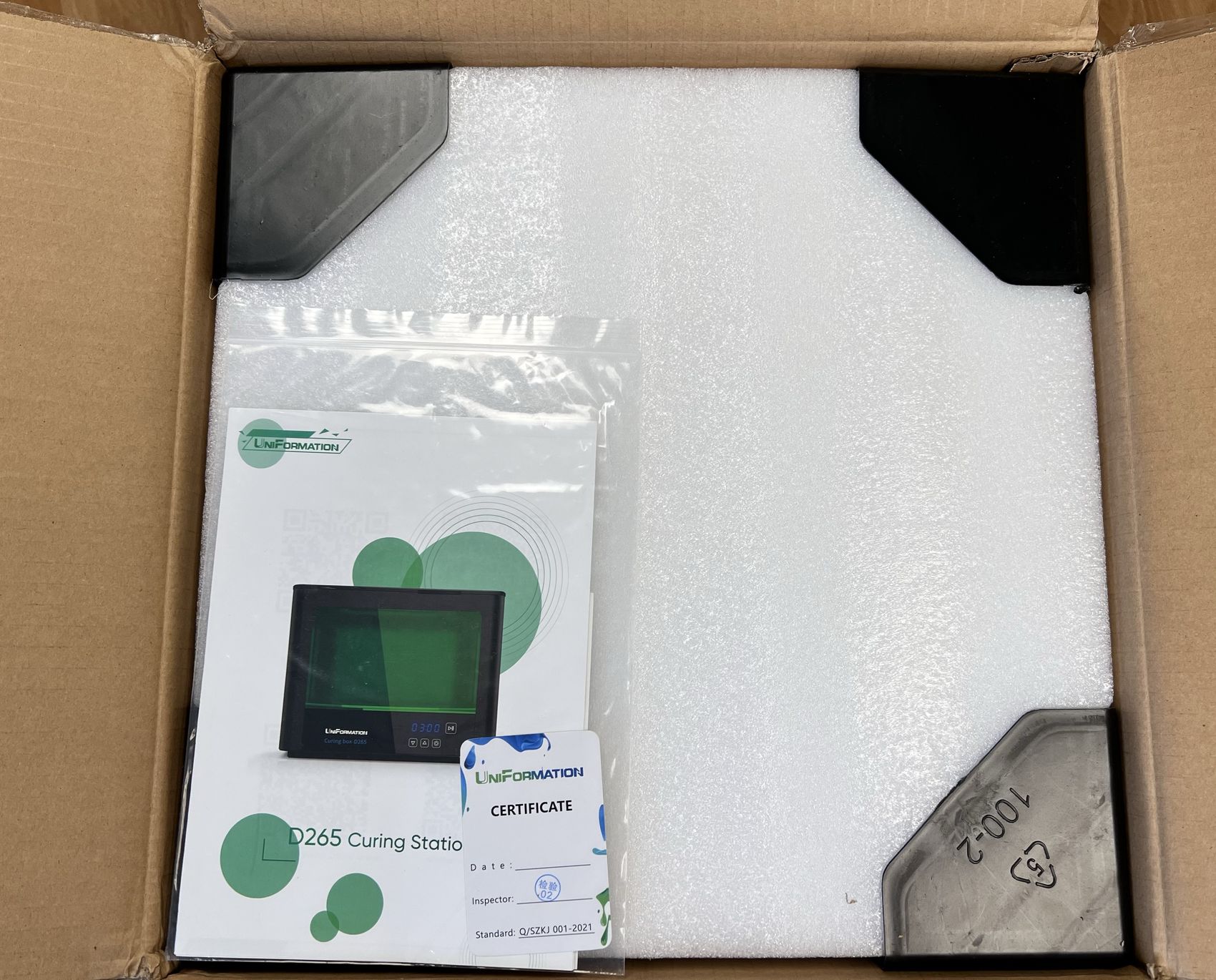
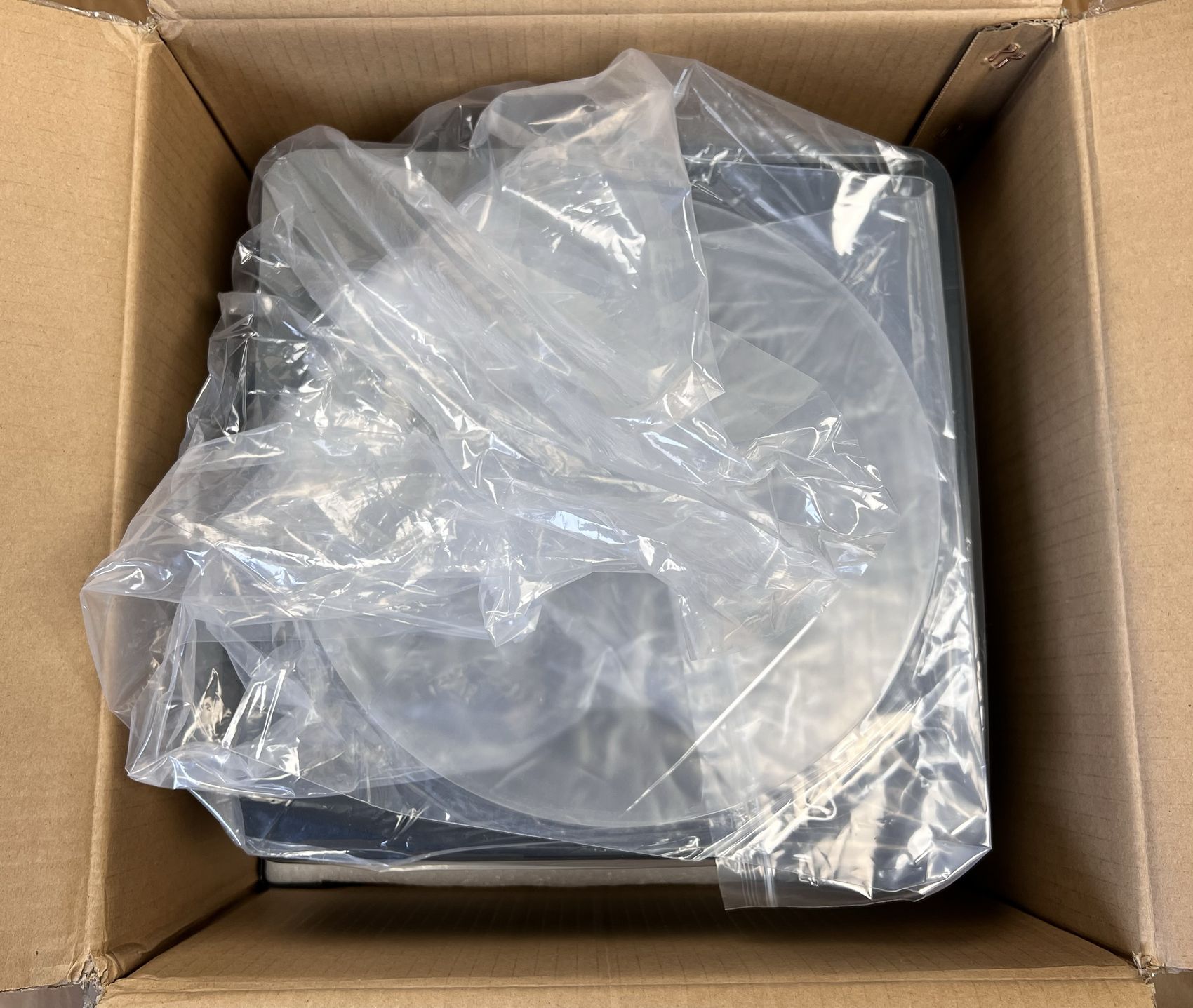
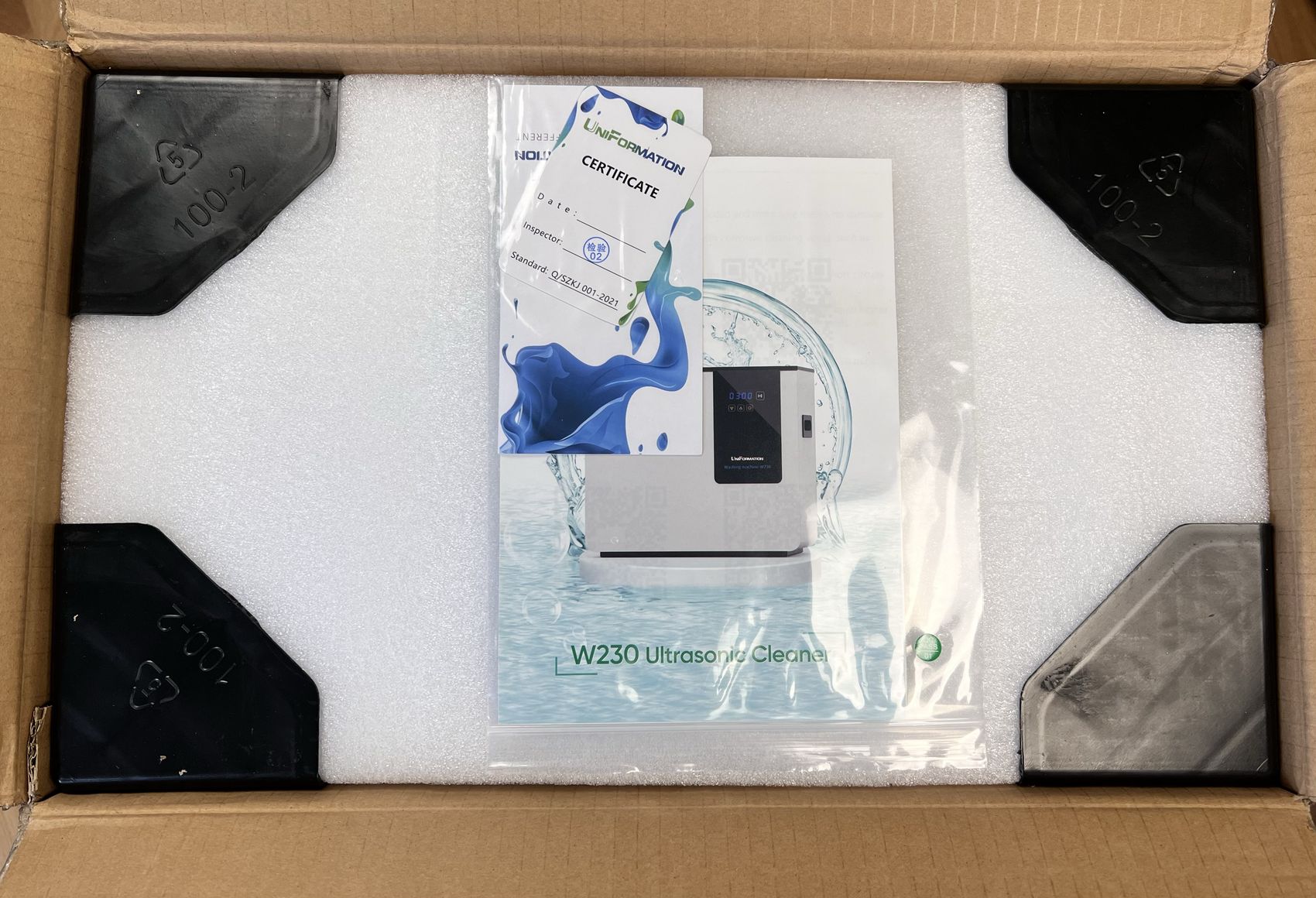
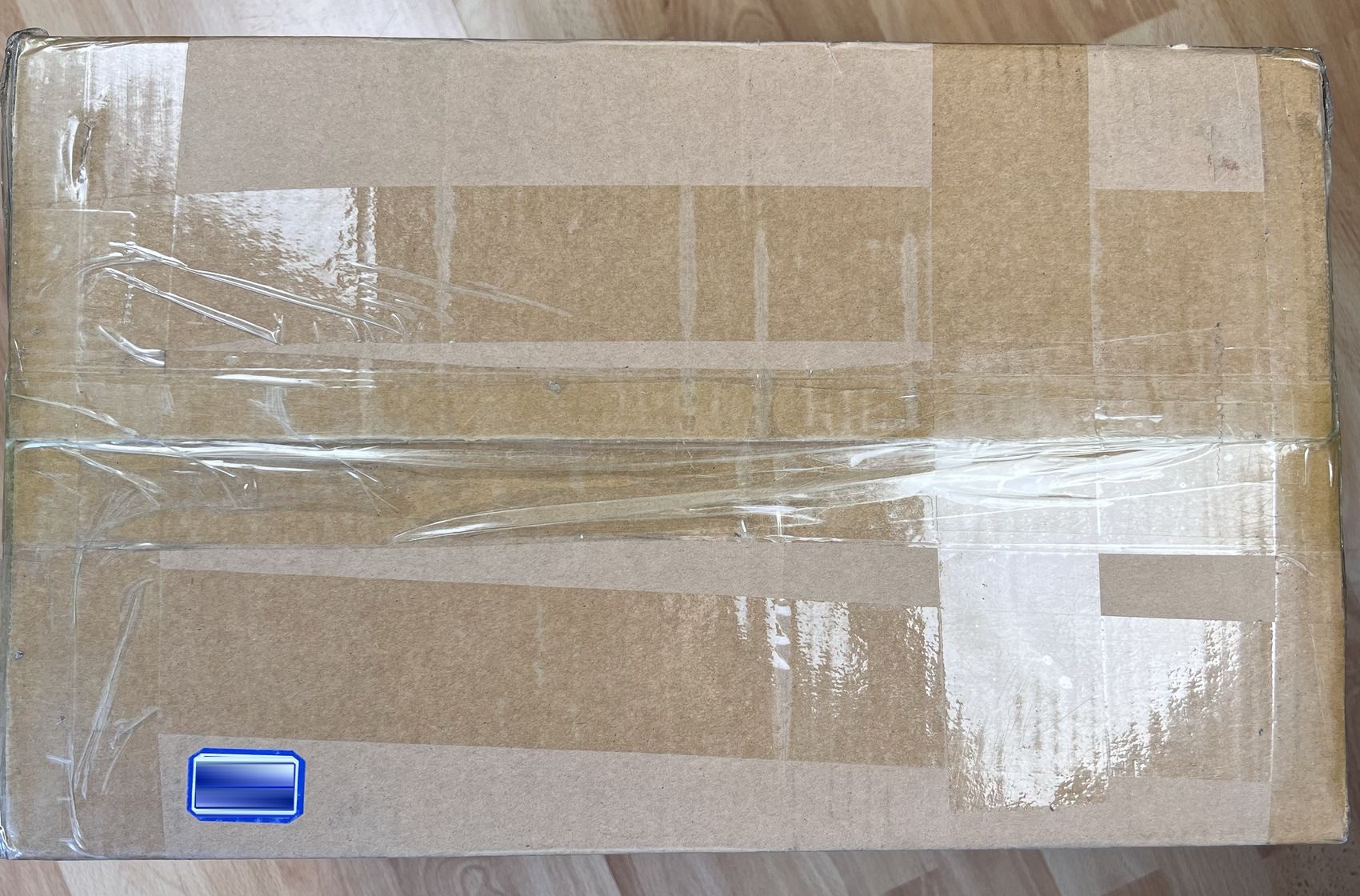
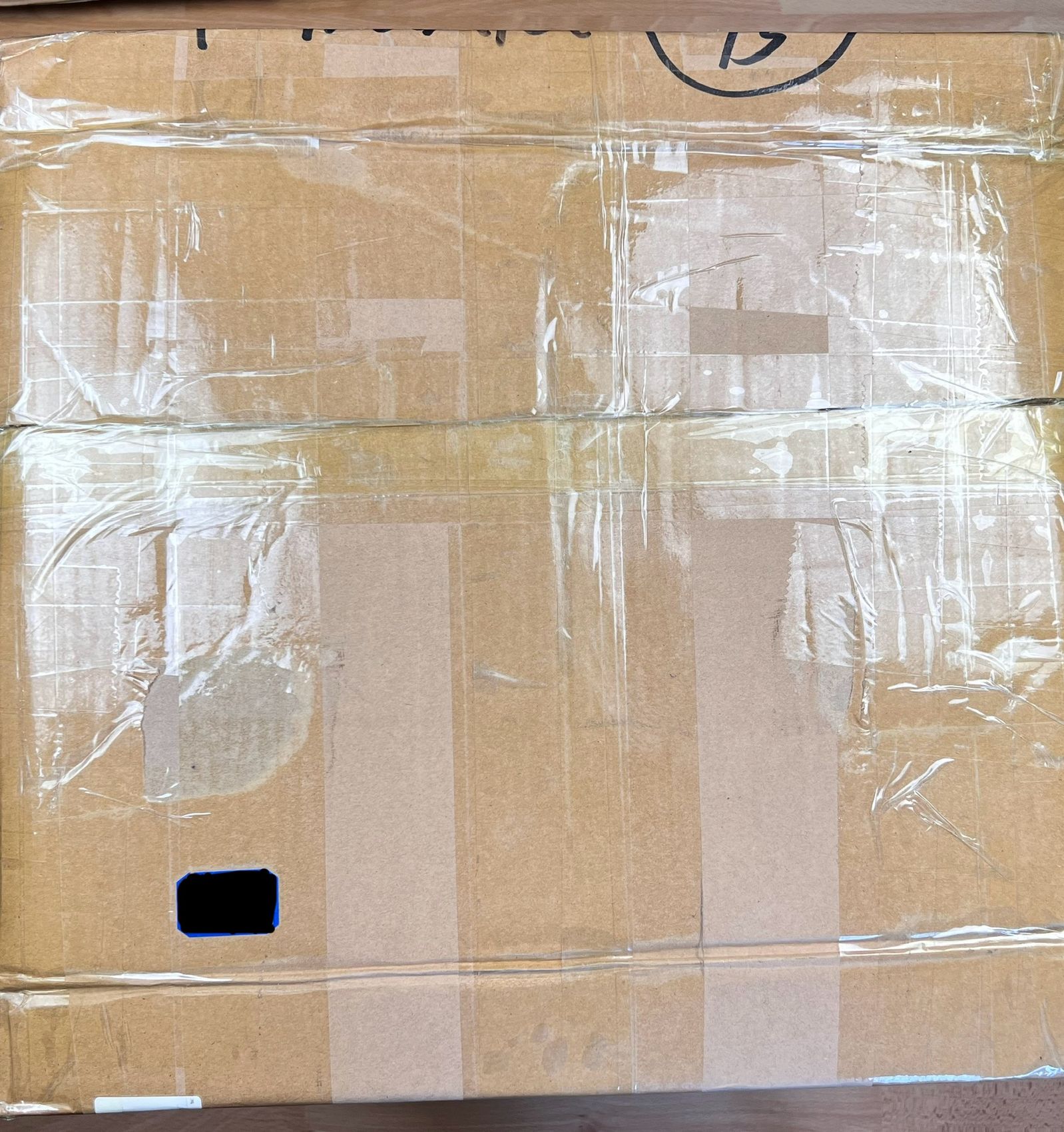
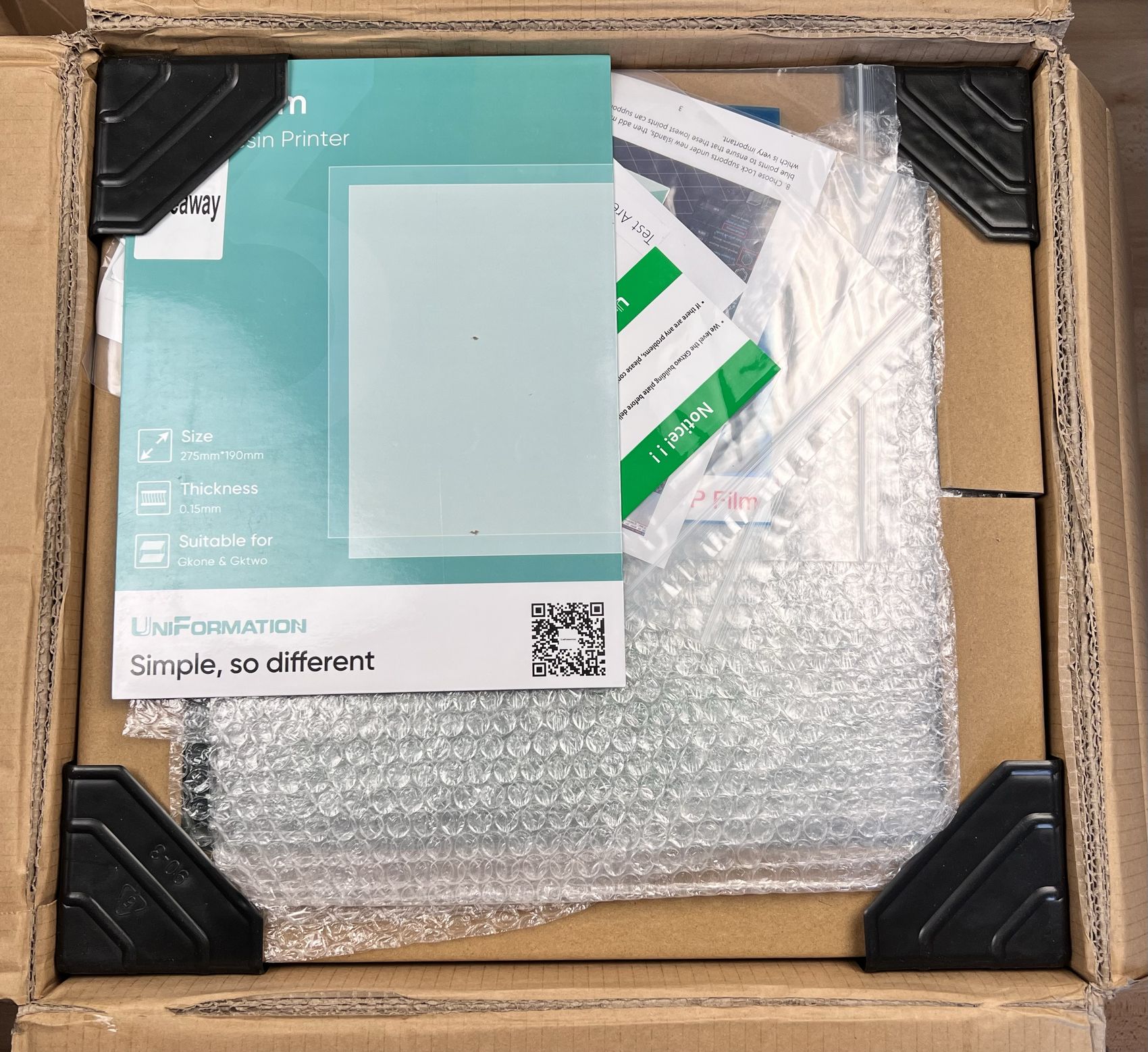
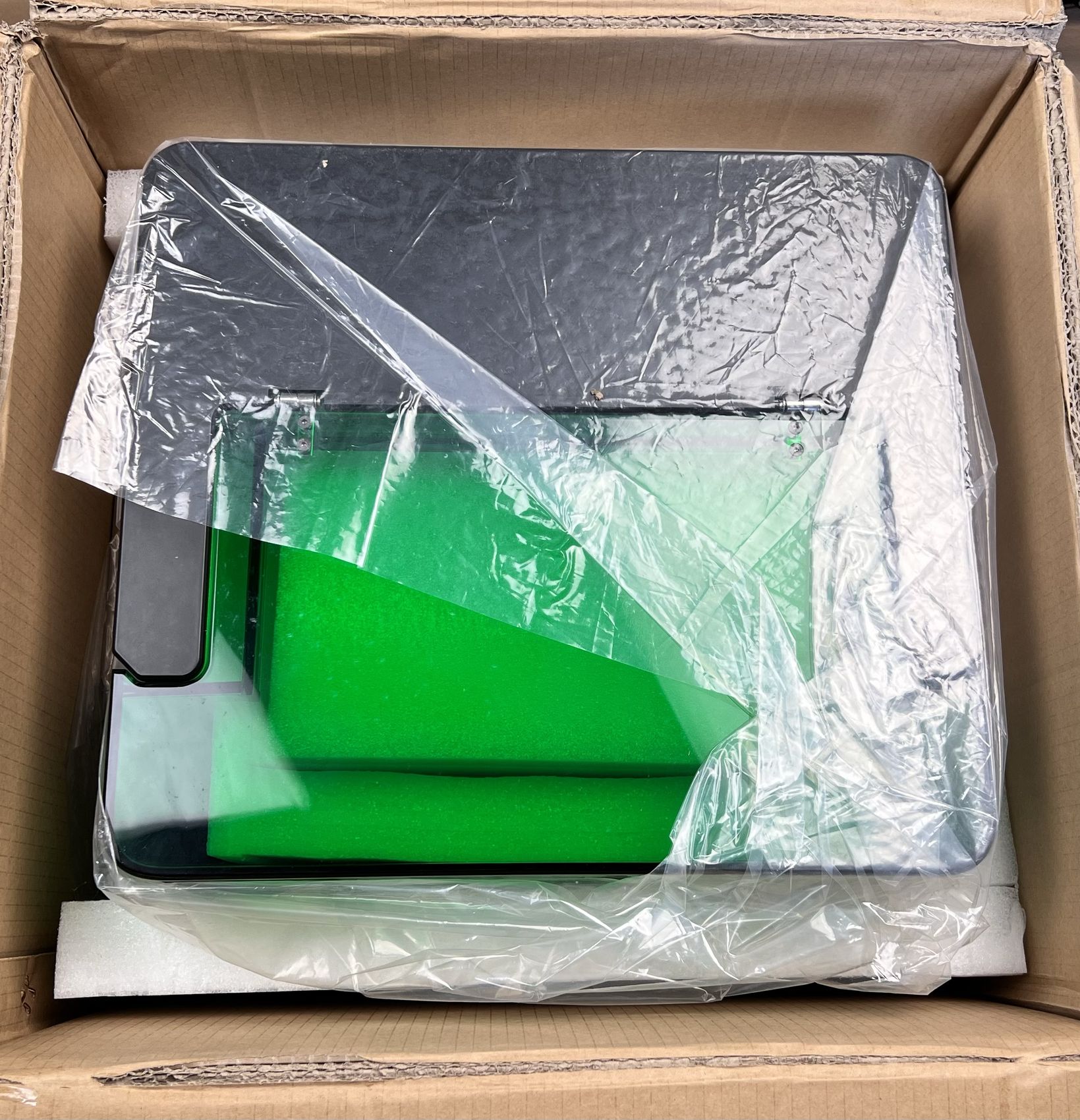
There is a very low chance of something being damaged during shipping.
UniFormation GKTWO Design
The UniFormation GKTWO resin 3D printer has a very nice and professional-looking design. The front cover is made from dark green acrylic while the entire body of the unit is made from metal painted with a silver finish.
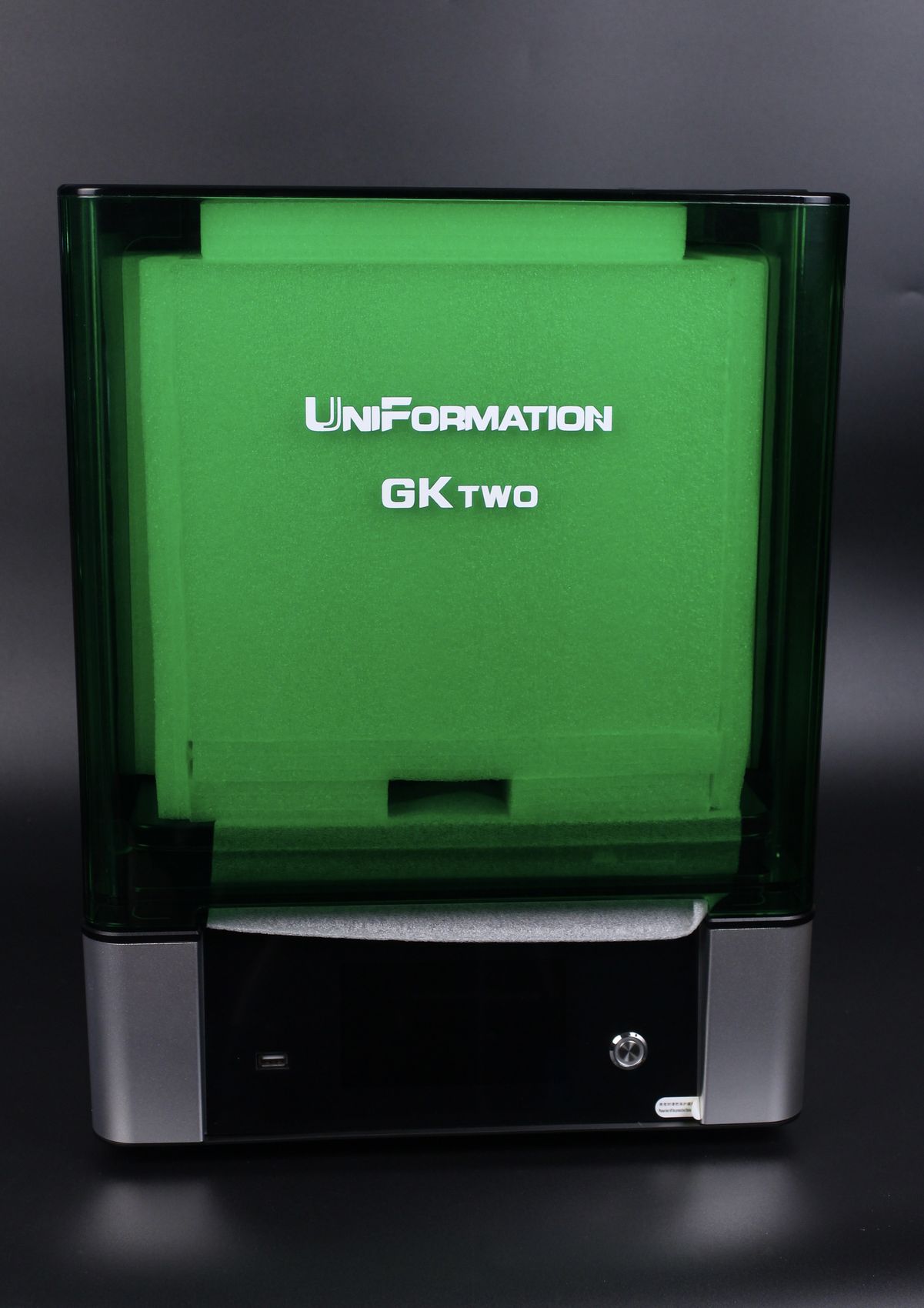
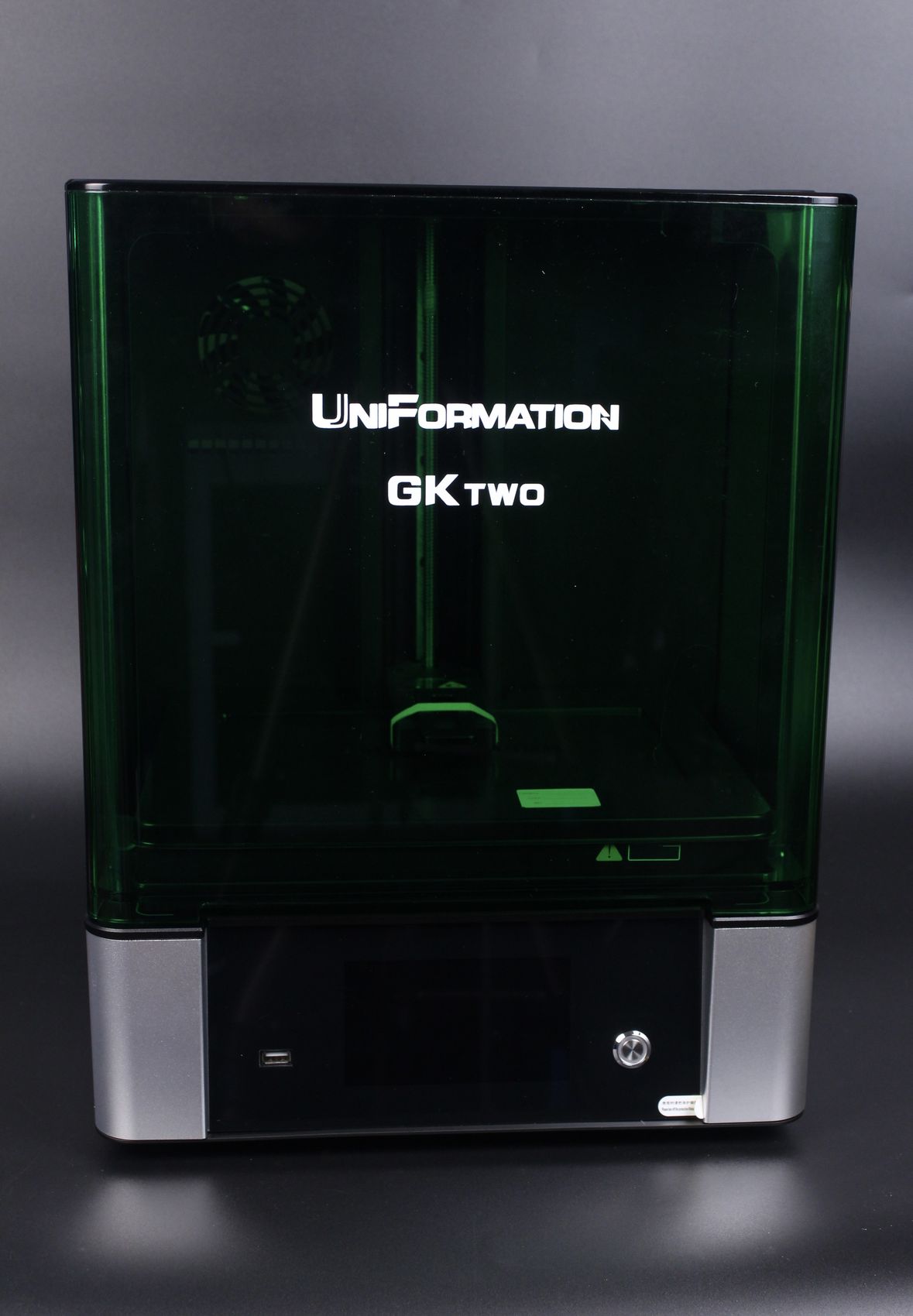
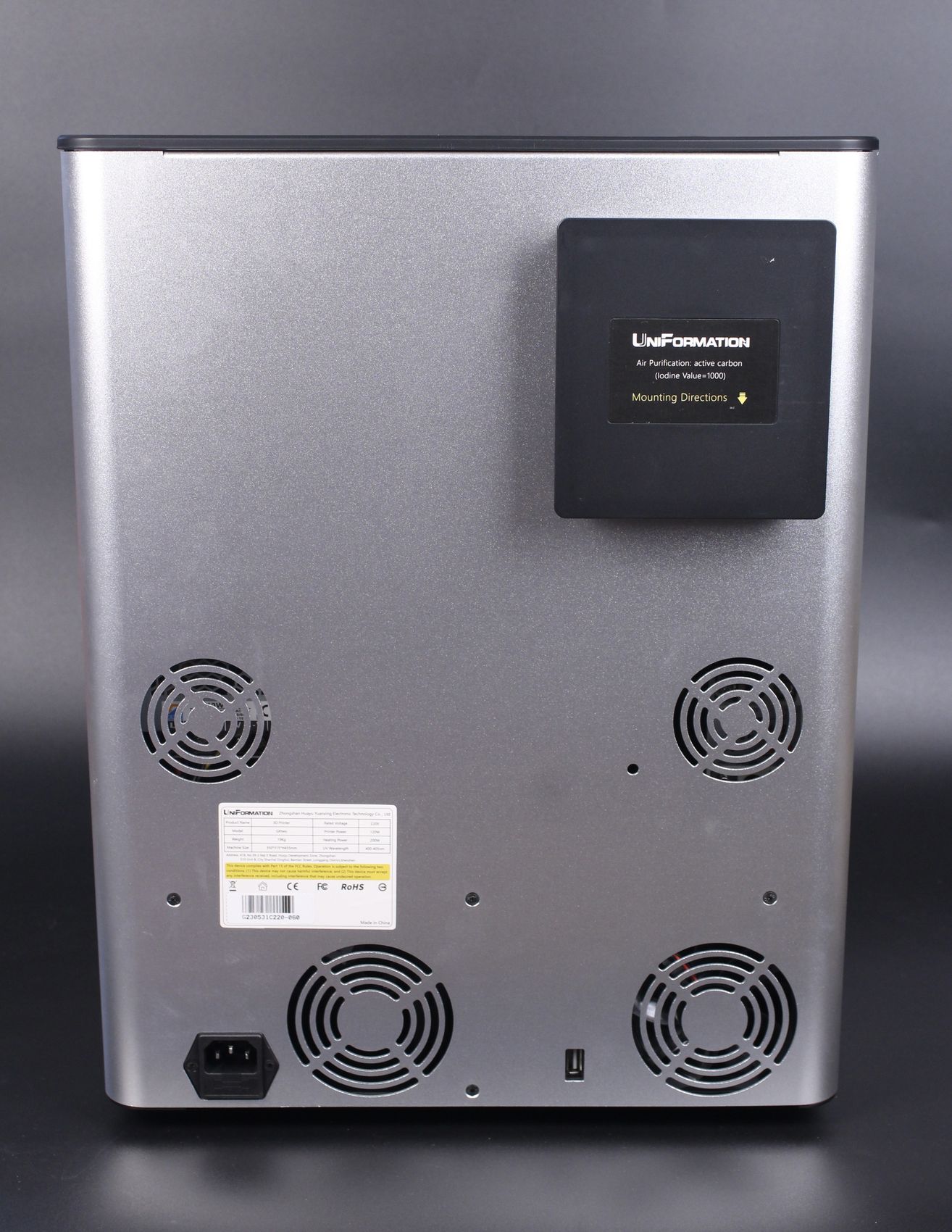
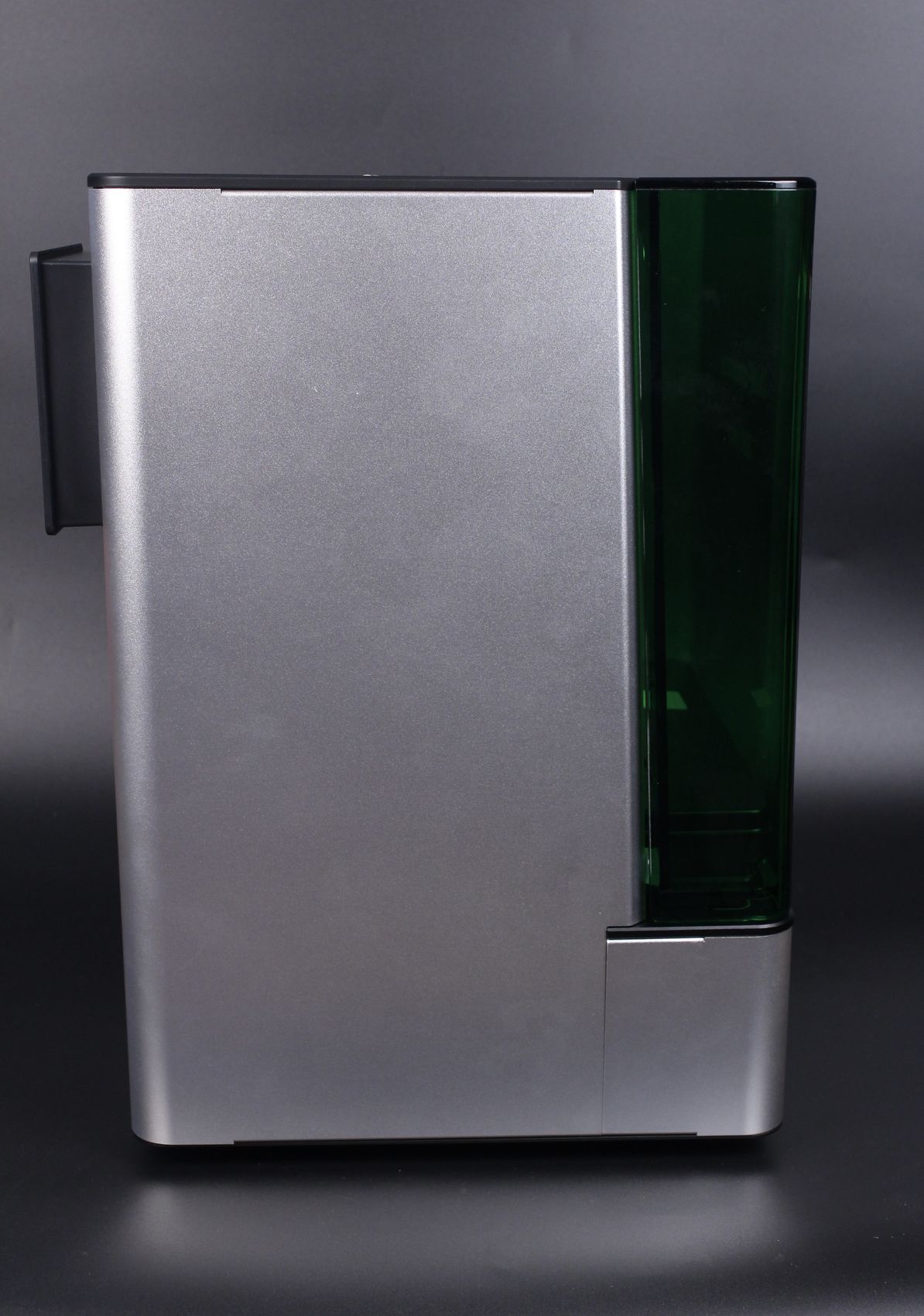
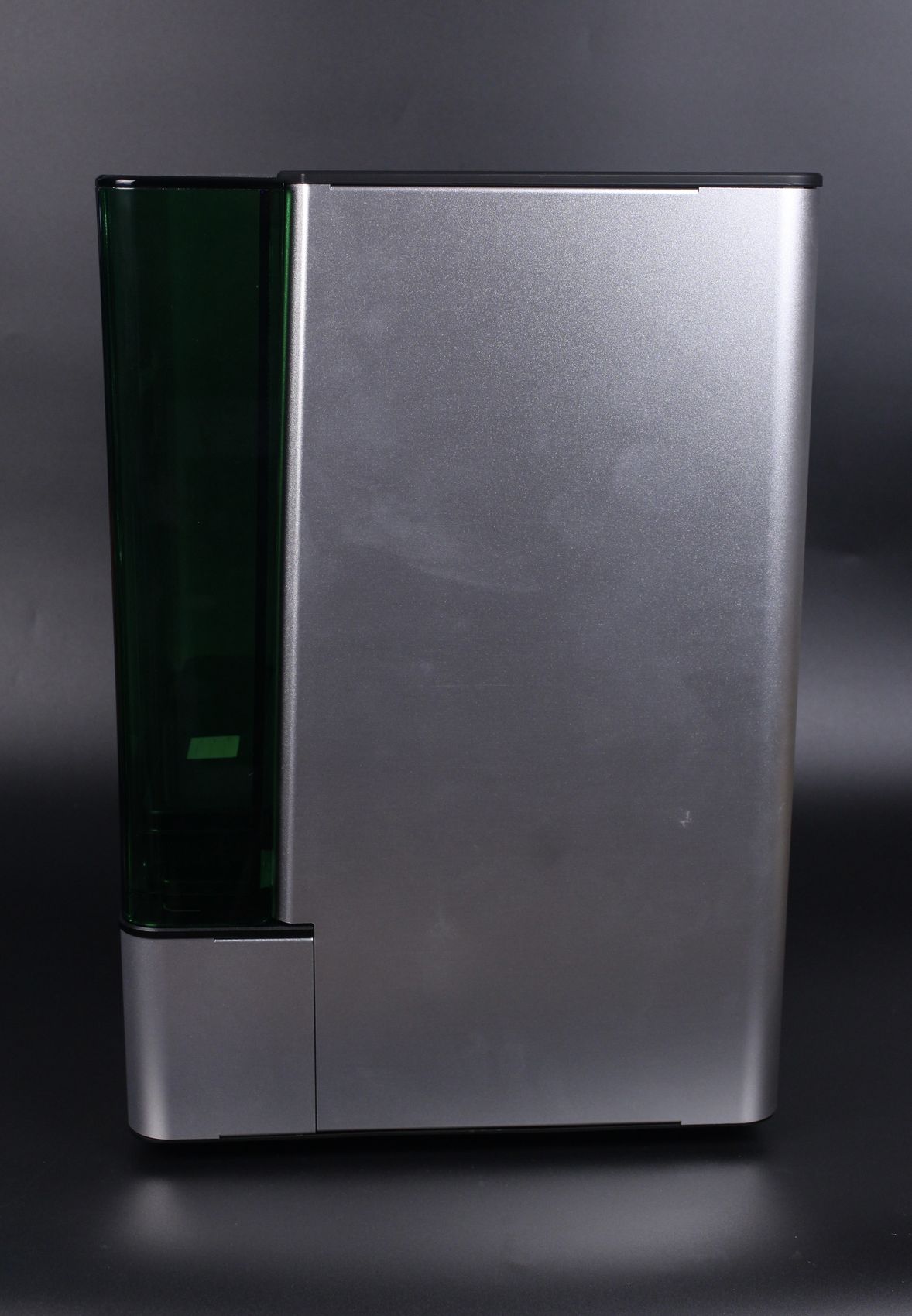
Flip cover design
I love the Flip cover design of the unit, which can be raised when you require access to the printer so it doesn’t take up unnecessary space. It’s also much easier to operate one-handed, compared to other resin 3D printers where you might need to use both hands to remove the cover.
UniFormation GKTWO Specs
| Product Size: | 350*315*H455mm 13.7*12.4*18in |
| Package Size: | 445*420*550mm 18*16.5*21.6in |
| Package Weight: | 20kg |
| Printing Volume: | 228*128*H245mm |
| Exposure time: | 2-3s/layer(0.05mm) |
| Technology: | Photocuring LCD |
| Wavelength Range: | 402.5-405nm |
| File Transfer: | USB |
| Software System: | Windows7(64 bit)and above |
| Slicing Software: | Chitubox; Gktwo Slicer |
| UI Operation: | 5’’ Touch screen |
| File Format: | STL |
| HD Resolution: | 7680*4320 |
| XY Resolution: | 29.6μm |
| Printing Tolerance: | ±0.1mm L≤100mm) ±0.1% xL (L>100mm) |
| Layer Height: | 0.03、0.05m 0.1mm |
| Resin Vat Capacity: | 0.7kg |
| Voltage: | 110/220V(Depends on the voltage in your area) |
10.3-inch Screen with 8K Resolution
The GKTWO has a 10.3-inch Screen with a 7680*4320 8K resolution which, in my opinion, is more than enough for most people. There are printers out there with a higher resolution but for a 10-inch screen, I believe 8K is great for very good detail of your models.
The screen is covered with a film to protect it from accidental resin spills which could cause irreversible damage to it which is nice to see.
I also checked the light uniformity of the screen and while there is a slight shadow pattern, I was unable to see this on my prints.
700ml Resin Vat
As you might have seen in the previous pictures, the screen has some tabs on the sides. These tabs are used for attaching the 700ml Resin Vat to the printer. This is a much easier way to deal with the resin vat as you aren’t required to fiddle with screws like on other machines.
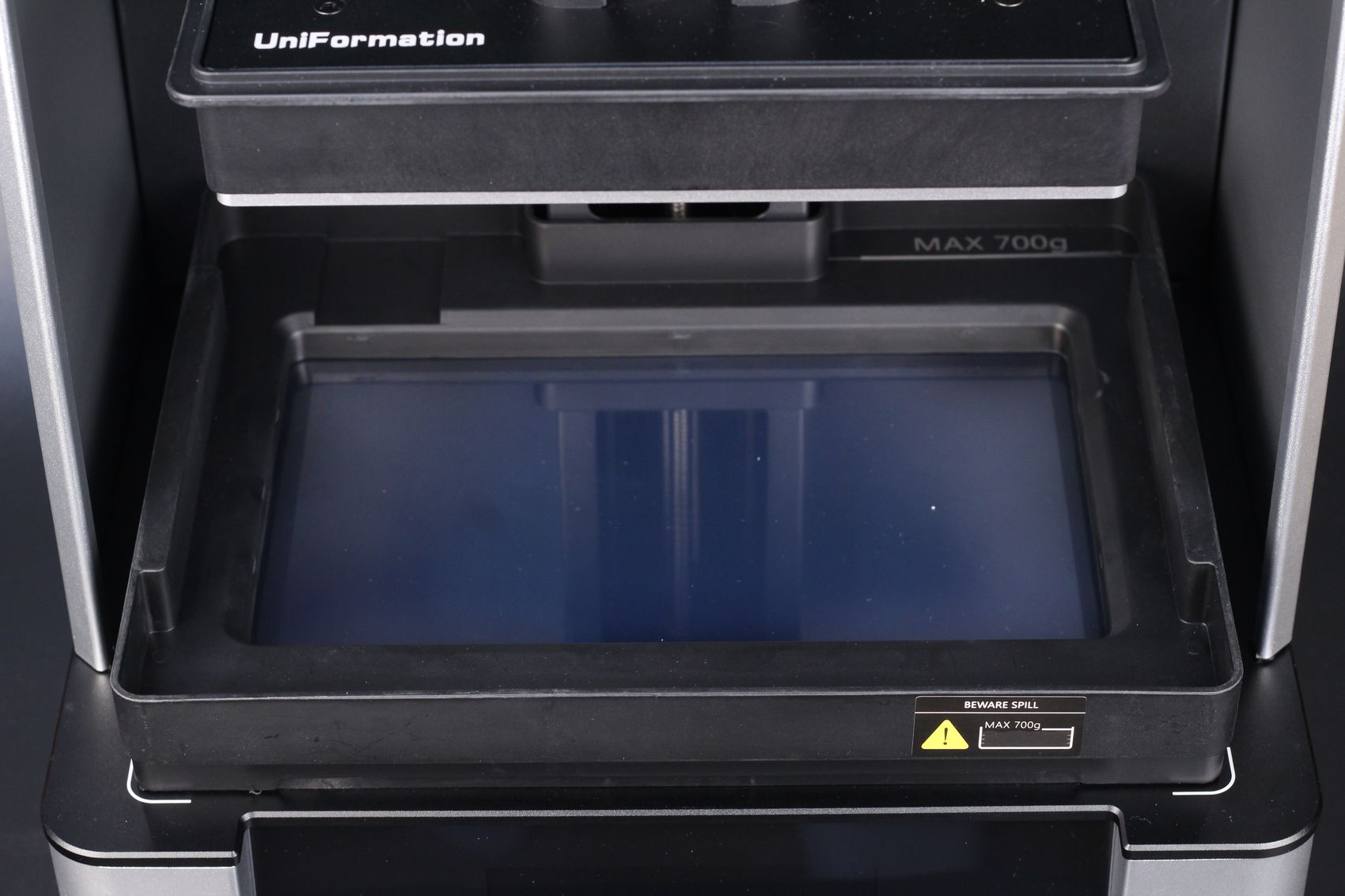
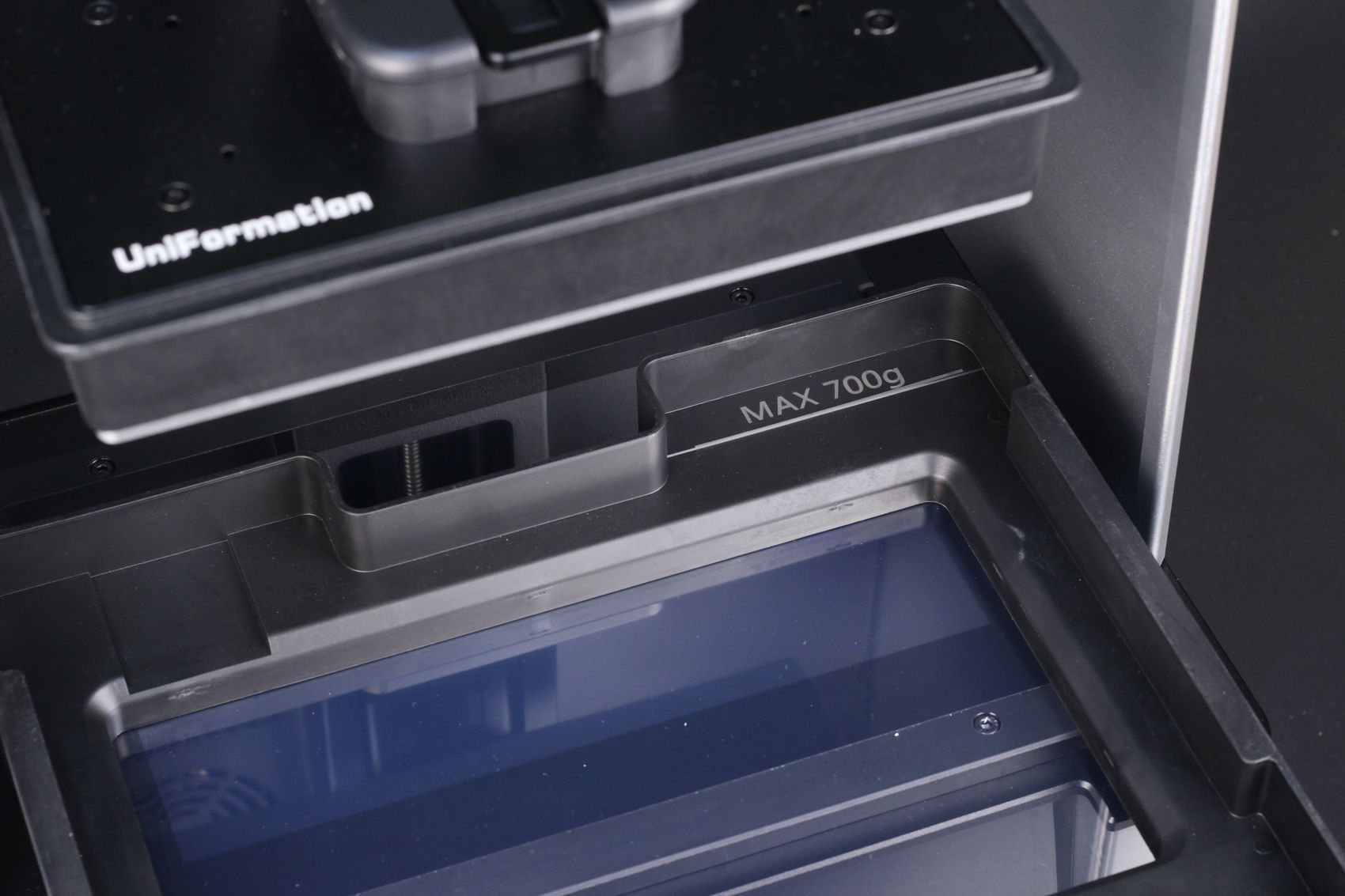
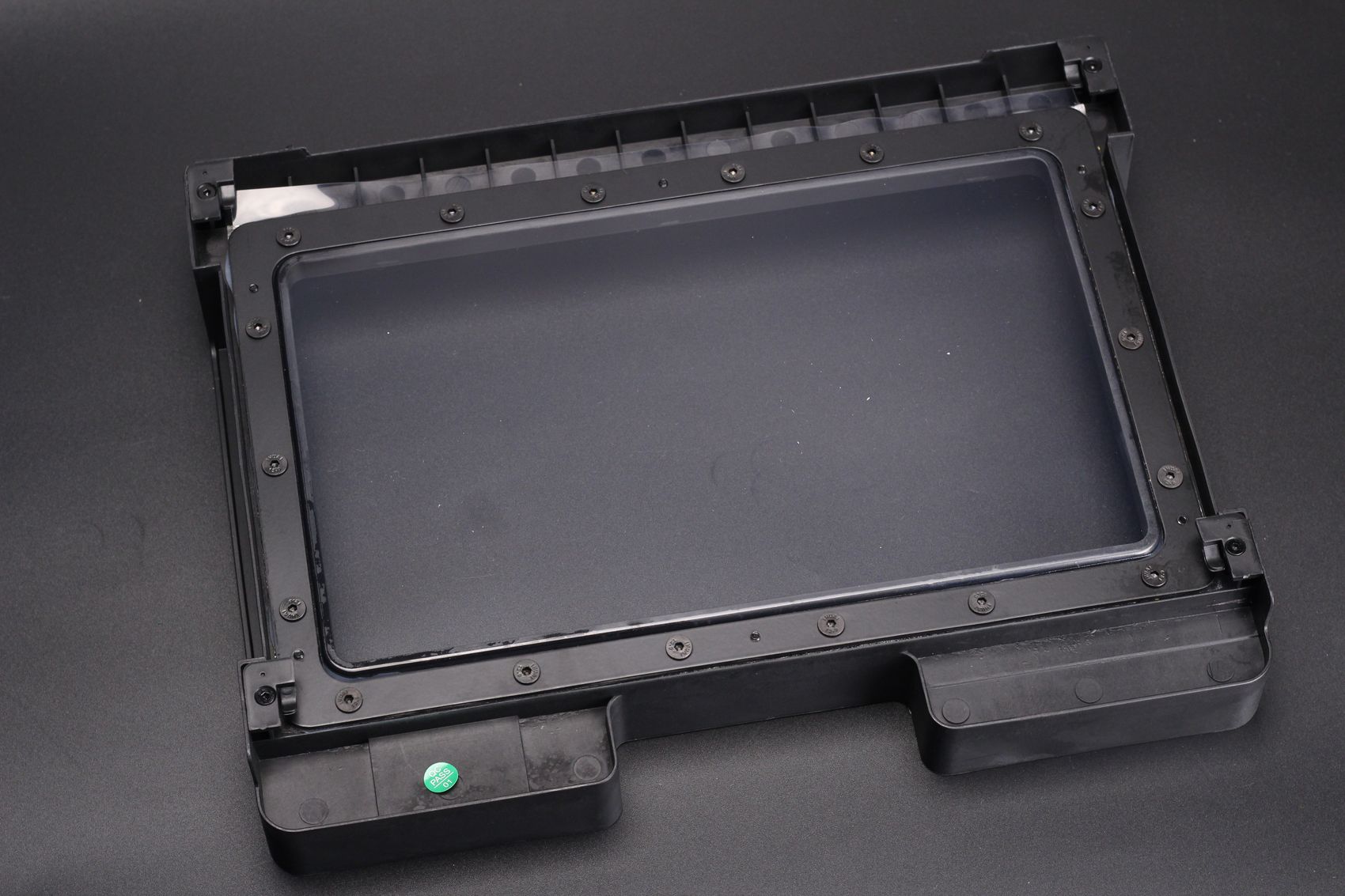
In this case, you just need to align the section of the vat, then slowly push it in place to be ready for printing.
The nFEP film looks to be easy to remove, by simply taking out the 18 screws keeping the metallic frame in place, and I also like the raised plastic feet of the resin vat. This helps ensure you don’t damage the nFEP if you need to remove it and place it on the side while you either print with a secondary vat, or you perform maintenance.
My only gripe with this vat is the lack of a draining corner. I would have liked to see one of the corners being tapered for easier draining of the vat, as when I did it it was harder than expected without the use of a funnel.
Heating system for the resin
Another very important feature of the UniFormation GKTWO is the possibility of heating the resin and the enclosure before starting the print. This is particularly important if you are using the resin printer in a cold place, or if you plan to print resins that require a higher temperature for best printing results.
You can set the temperature in the printer’s menu to three values: 25C, 30C, and 35C. After this is set, the printer will always wait before starting a print to reach that temperature.
It can take longer to reach a specified temperature, depending on the environmental conditions. There’s also a mention in the manual that if the environment temperature is too low, the temperature set might not reach the one selected. This is due to the fact that the printer doesn’t have a dedicated vat heating solution, but I believe it’s not a very big issue, considering that 25C to 30C should be something that you can reach without too much trouble.
Carbon Air Filter
A nice feature of the UniFormation GKTWO is having a removable Carbon Air filter attached to the back of the unit. This carbon filter is magnetically attached to the unit and a large fan blows air through it to filter the resin smell which returns back to the unit via the wide section in the bottom
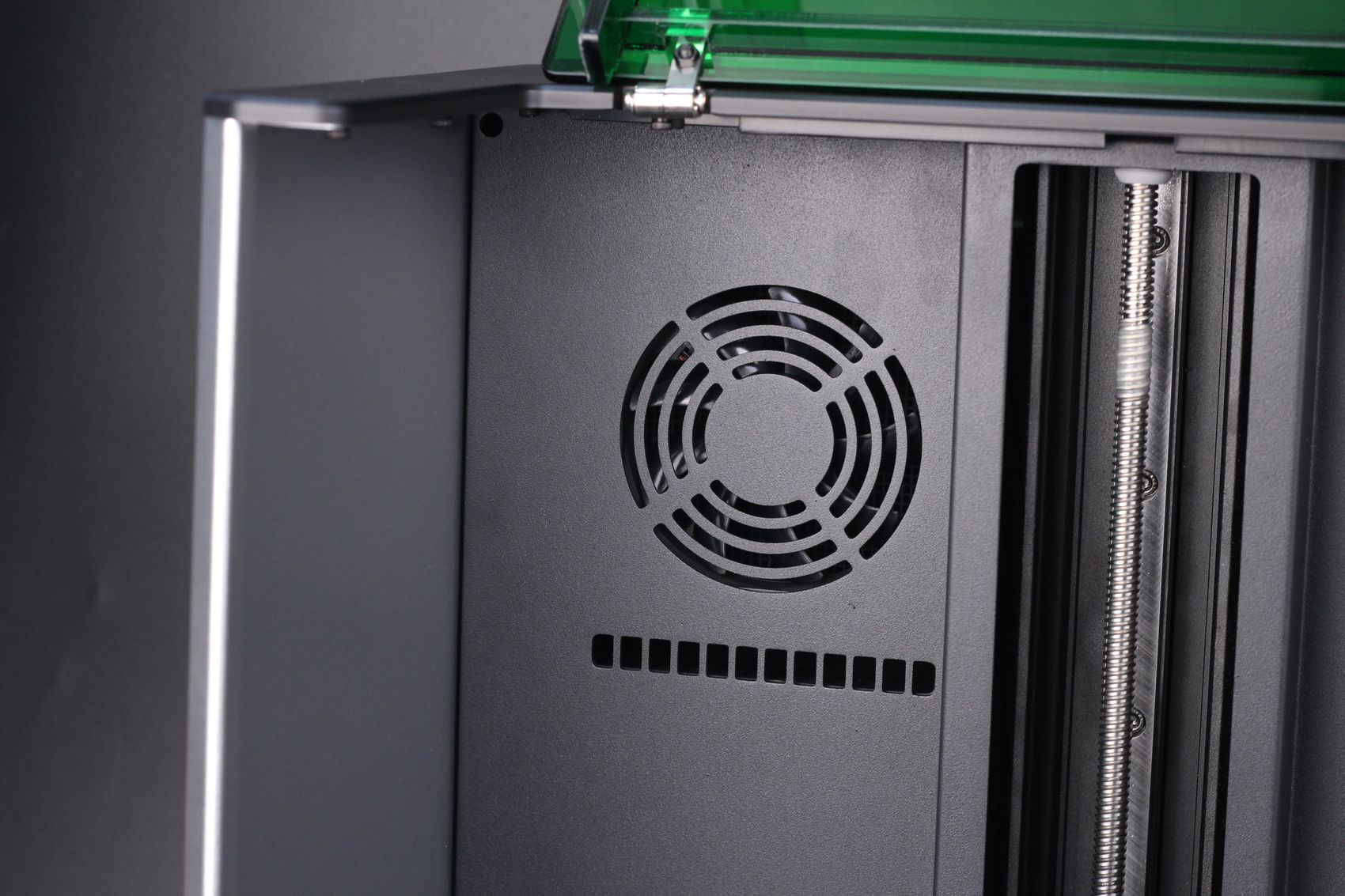
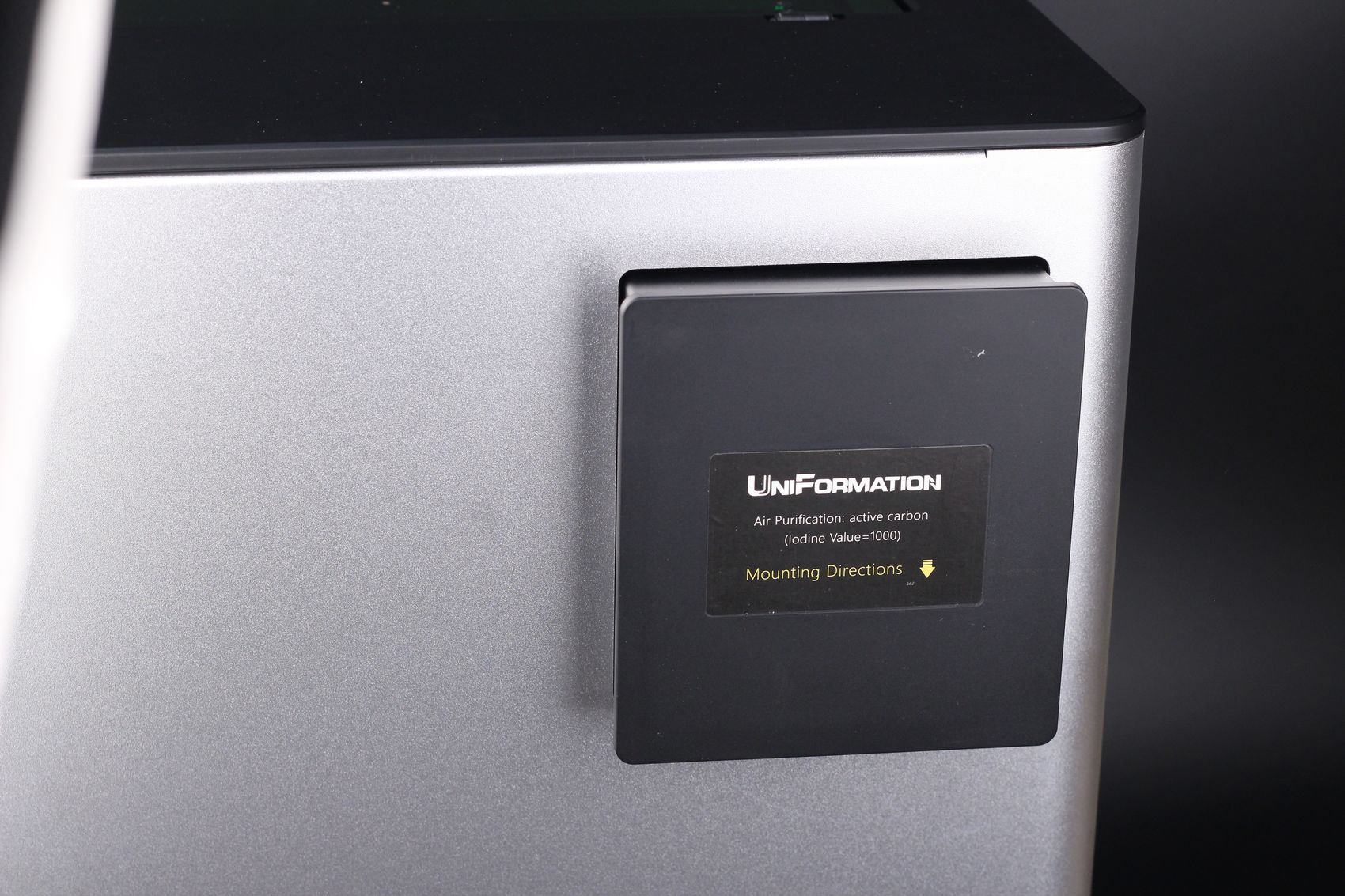
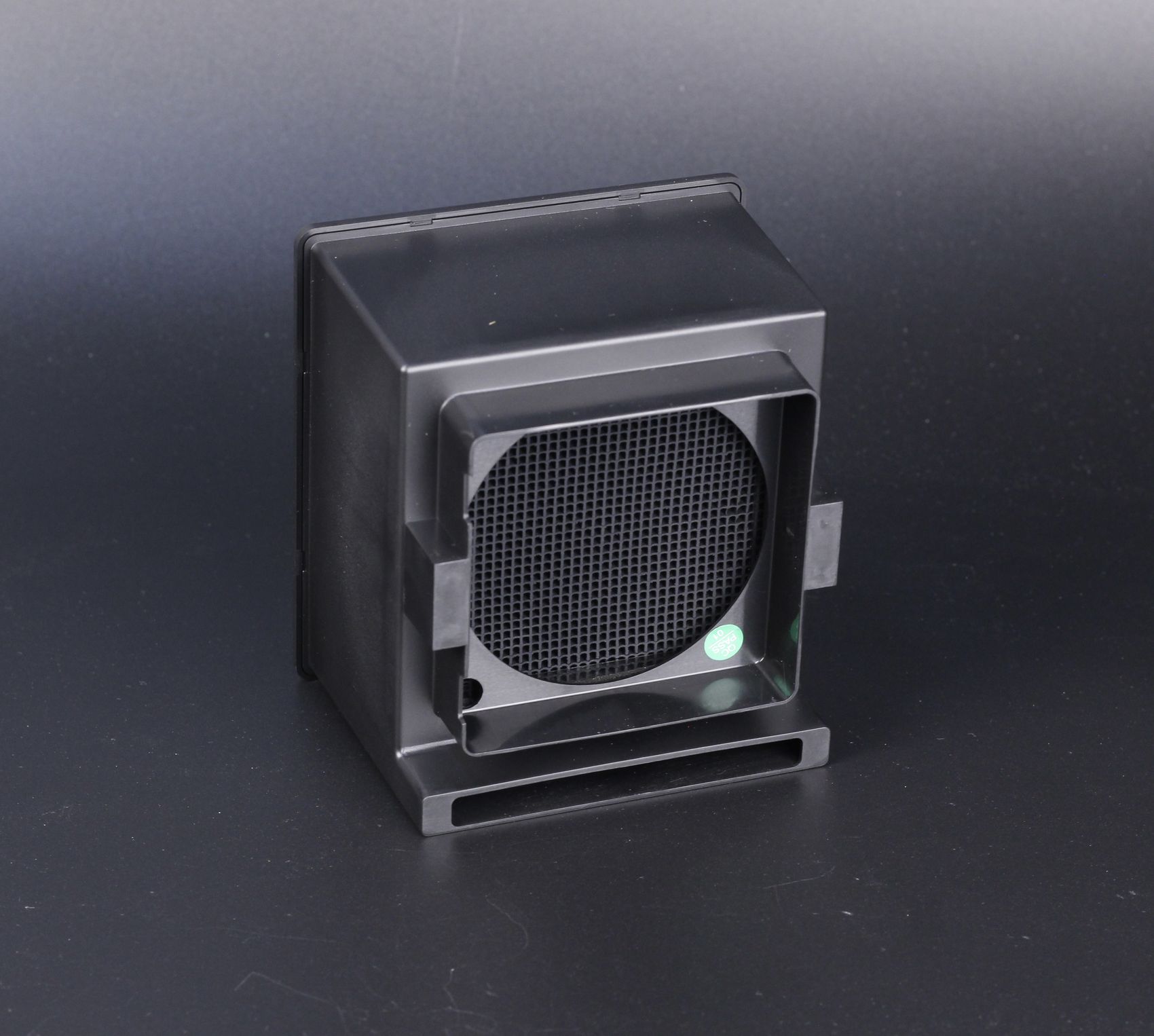
The filter works and significantly lowers the resin smell, but it is not perfect and you can still smell the resin fumes during the operation. I believe this issue is partially due to the less-than-perfect insulation around the carbon filter where if a rubber ring had been used on it, the results would have been better.
Other resing printers have a similar air filtering system, but when it comes to actually replacing the said filter you can’t always find it. But I am happy to say that UniFormation has them available on their website for a relatively reasonable price.
Sandblasted aluminum build plate
The sandblasted aluminum build plate is much different compared to the usual build plates we get on other resin printers. The entire design of the plate is nicely made to ensure that resin doesn’t pool on the top section to cause a mess when you remove it.
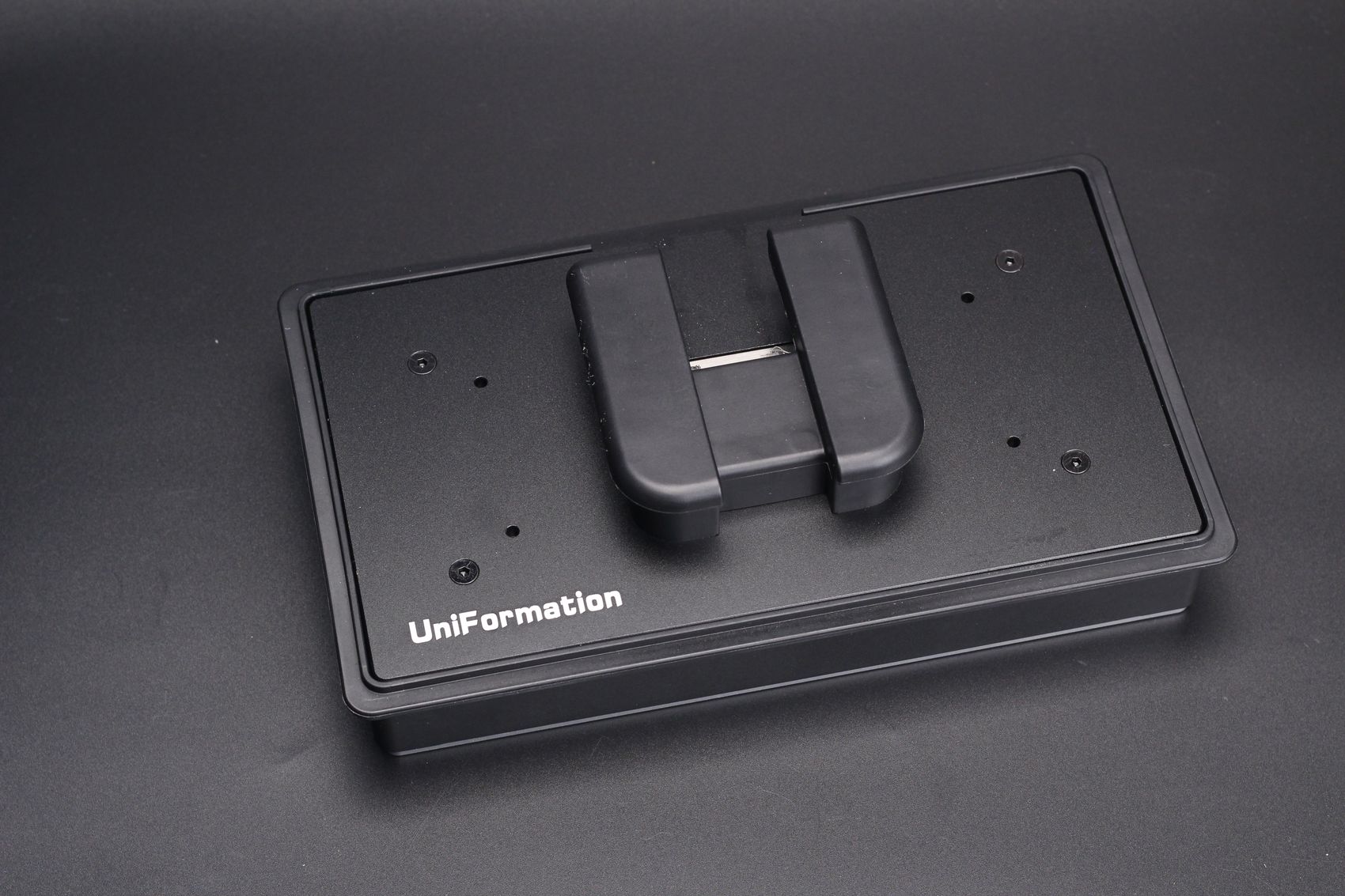
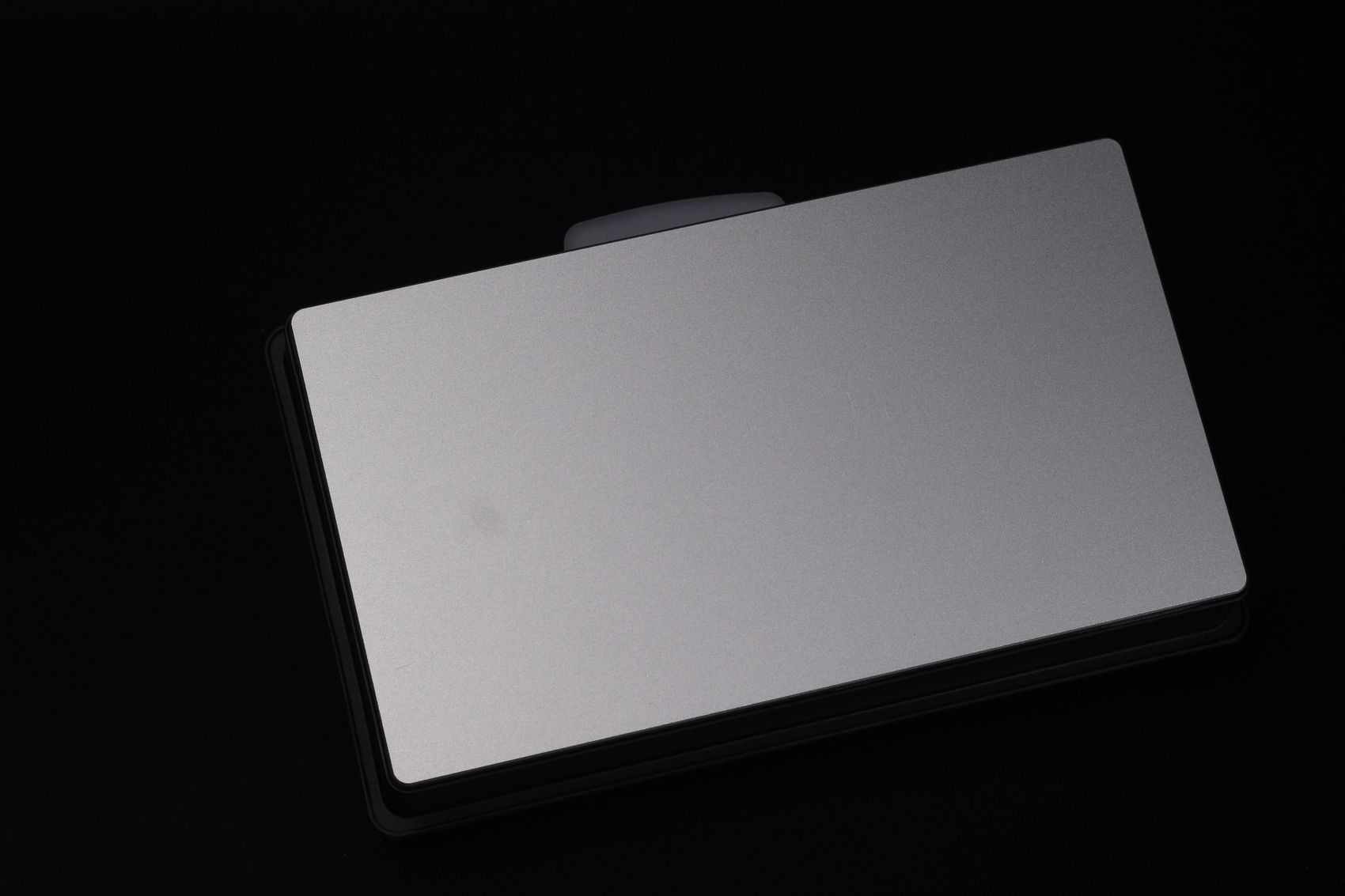
Another feature is the possibility of leveling the plate only once (or not even required to level it, as it comes pre-level from the factory).
There are four screws on the corners of the plate with springs inside which need to be loosened when performing the leveling procedure. But there is an extra four screws inside the build plate that are used to confirm the position of the plate, and when they are tightened the leveling setup is “locked in place”.
Unfortunately, my unit had an issue with the leveling, and I needed to re-level it multiple times to get usable results. The first few times I tried it, even though the leveling was done correctly according to UniFormation’s guidance, the plate was homing lower meaning that it was pushing against the screen and squishing the layers too much. The result of this issue can be seen in the image below:
After a few hours of troubleshooting work, the problem was solved by leveling the plate with about 10 sheets of A4 paper between the plate and the screen. Using a single piece of paper with the small paper tabs recommended by UniFormation didn’t allow me to get a good result.
While it was quite frustrating, after doing the leveling with multiple sheets of paper, the printer now homes correctly every time, and the issue is solved. I checked with UniFromation and they told me they had similar issues in the past, but they were isolated and not very common so I would say it was just bad luck.
Quick Release design for the vat and build plate
The entire printer is designed with quick-release options to make it super easy to use. As mentioned, the vat can be easily removed by pulling it forward and then raising it. For the build plate, you just slide the plate in then lock it in place with the clamp on the top.
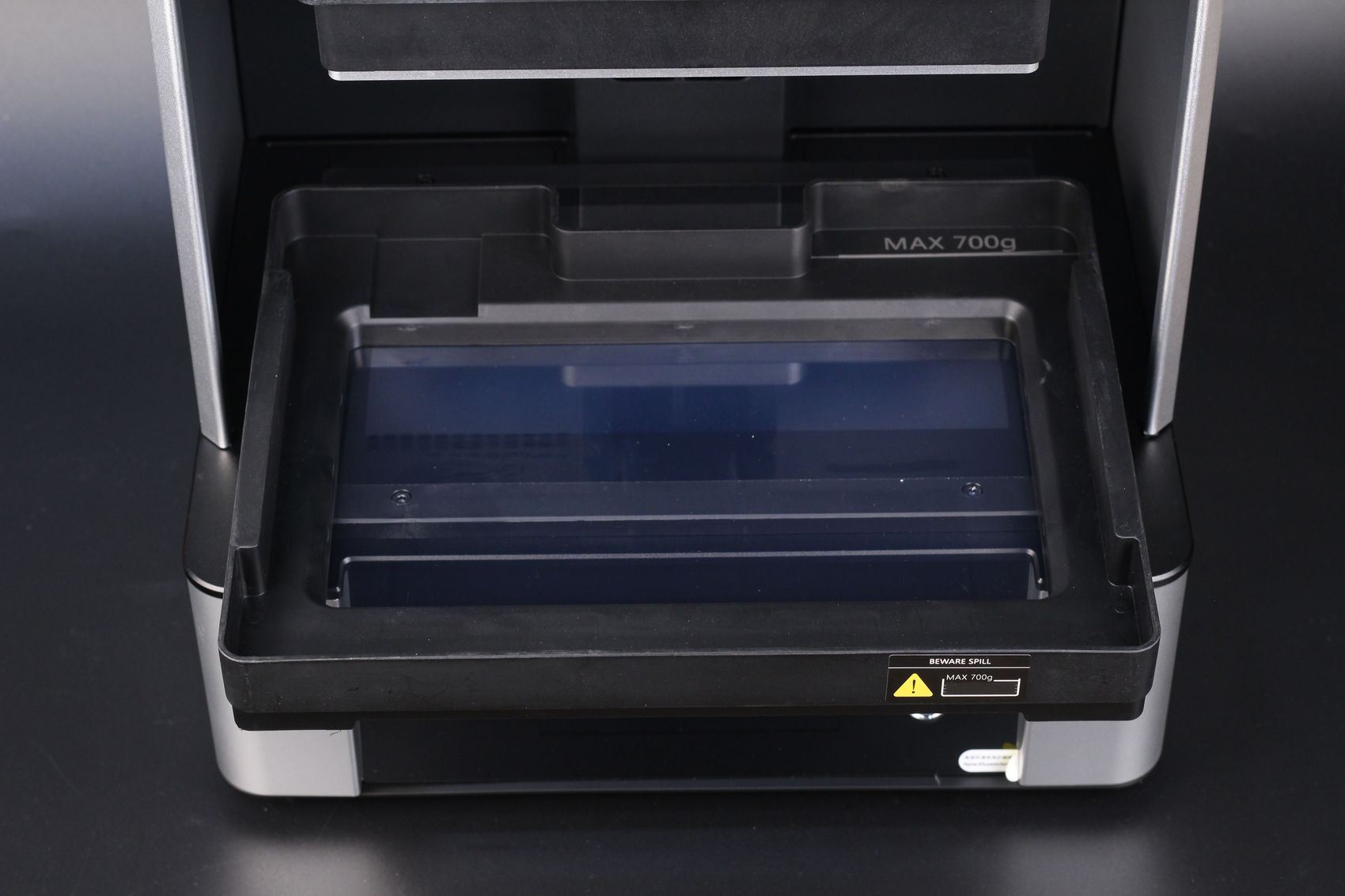
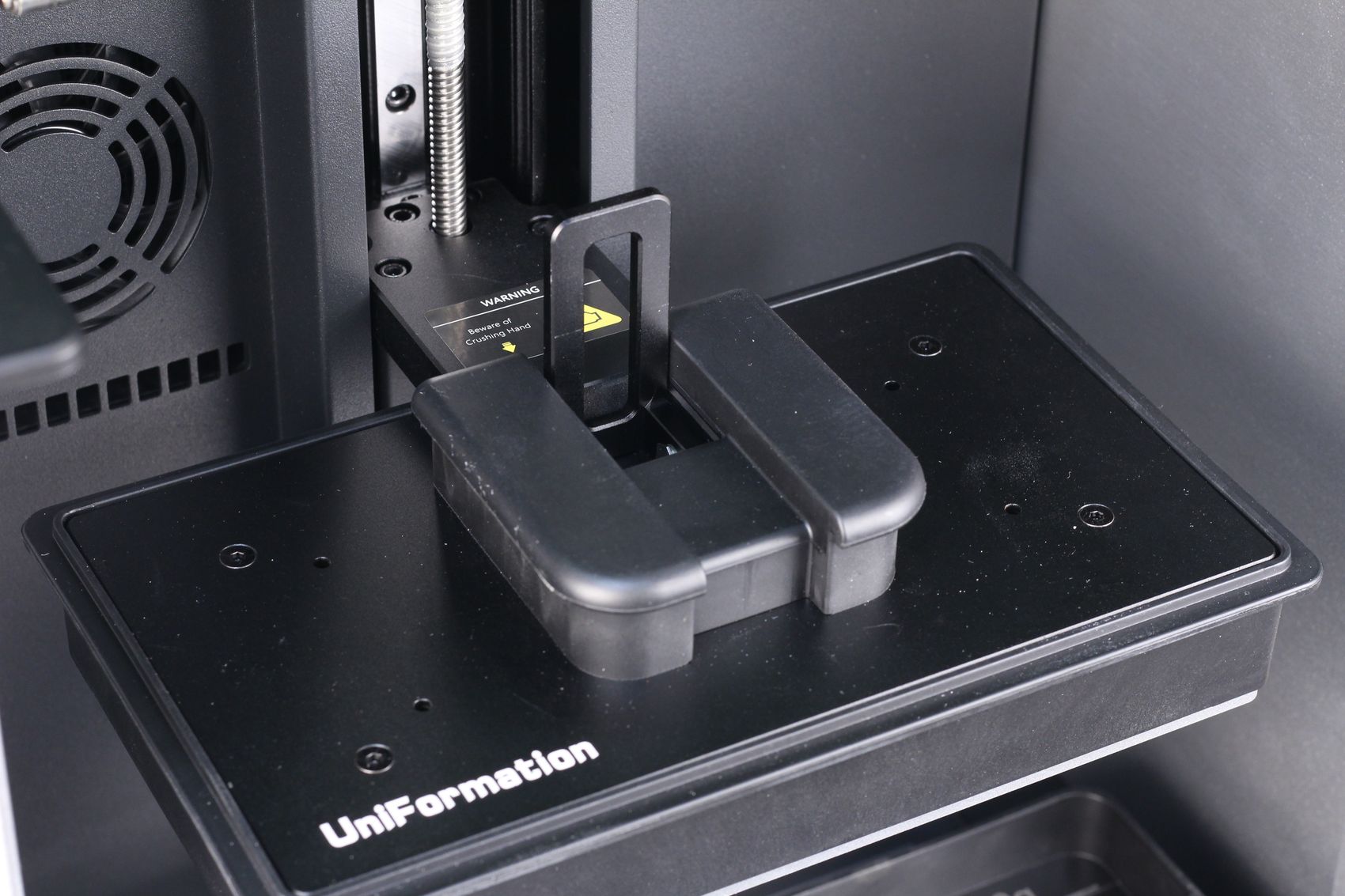
Overall, it’s a very easy-to-use system, and probably one of the simplest I’ve tried compared to the other resin 3D printers I have reviewed in the past.
5-inch Color Touchscreen
The 5-inch touchscreen is a joy to use. Besides the good resolution, colors and viewing angles, it also has a plethora of options to control all the aspects of the machine. It’s also very responsive and the entire operating system is fast.
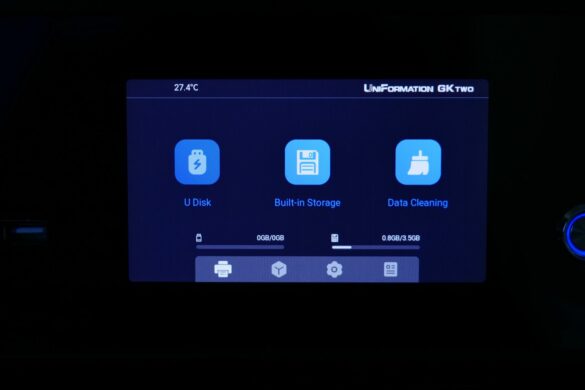
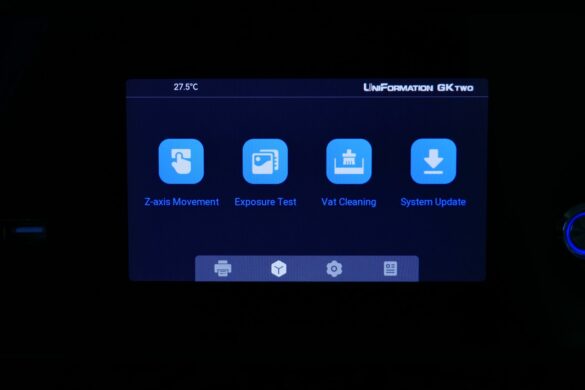
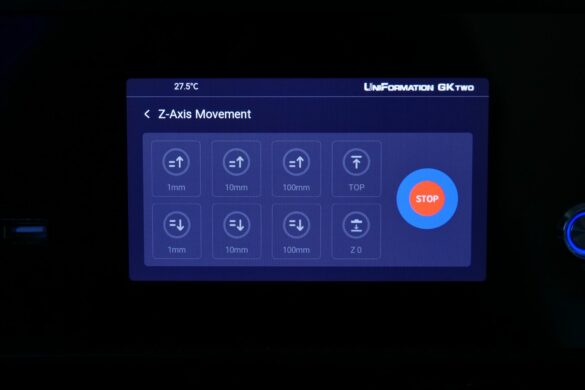
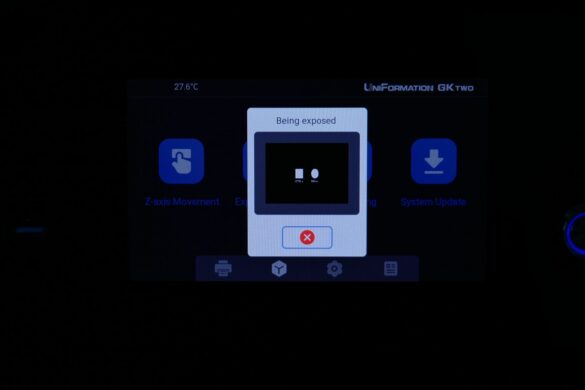
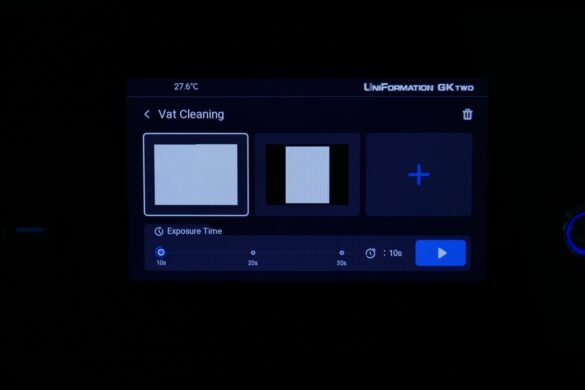
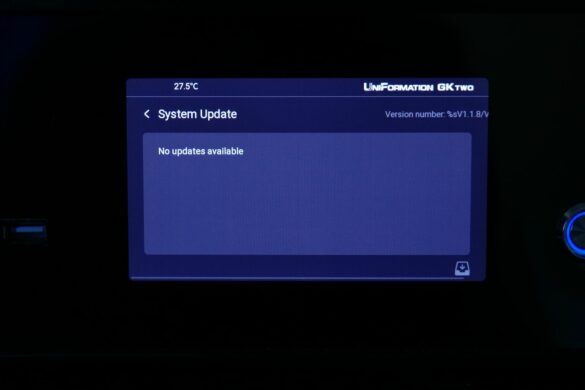
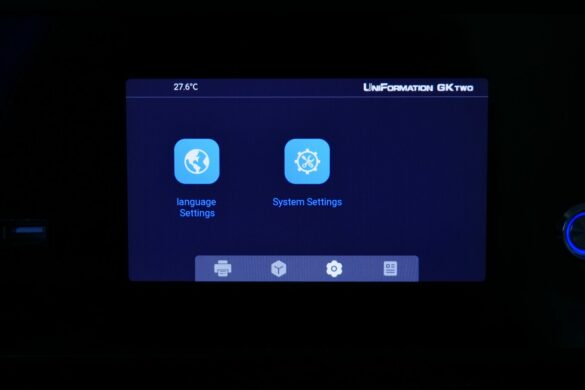
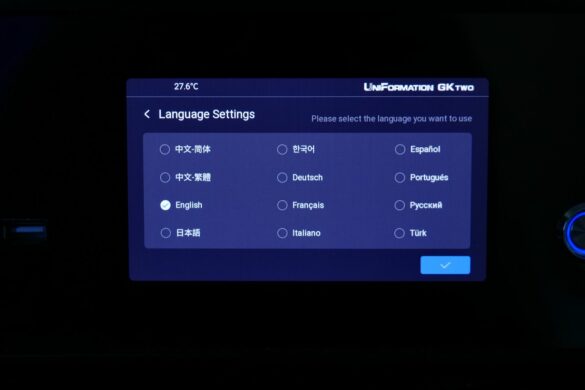
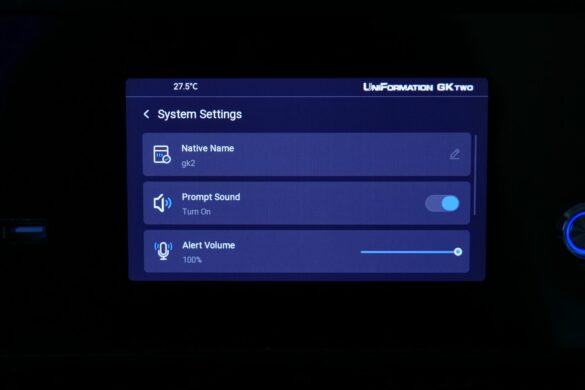
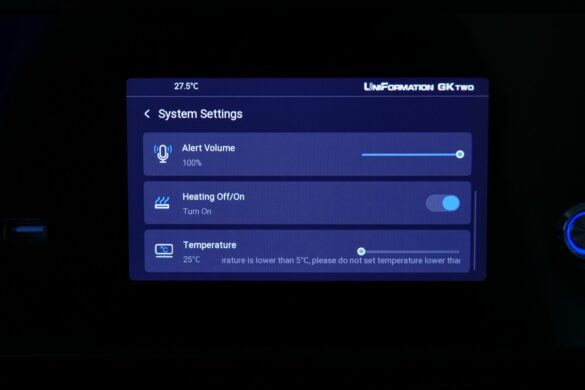
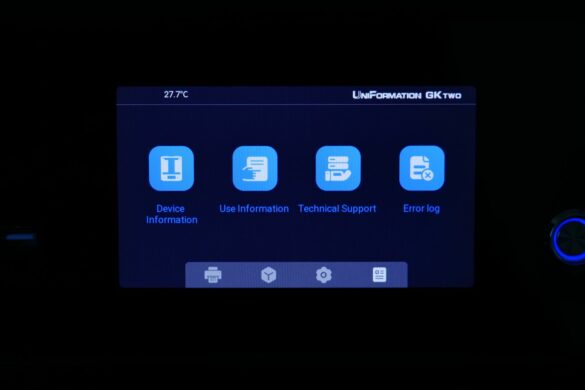
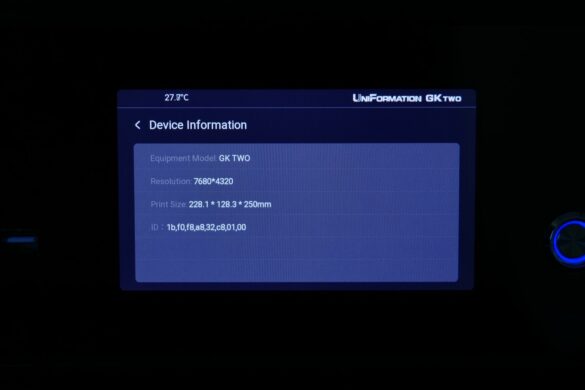
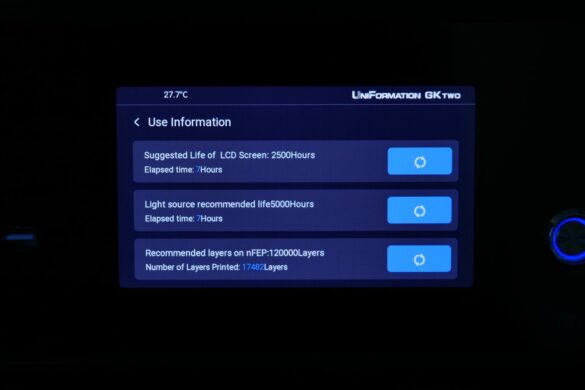
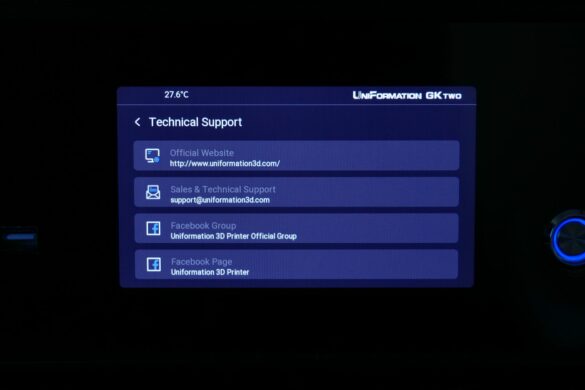
The design of the menus is intuitive, making it relatively easy to use for everyone. The only “issue” I can report is the requirement of always copying the file on the internal storage of the printer before starting the print. On one side, it’s useful if you print with a USB drive as you just move the file to the printer and then you can remove it to avoid any mistakes if you hit the drive during printing, but on the other side, this also adds about an extra minute before you start the print.
Of course, this is a minor “problem” that most of the users might not even care about, as other smart resin printers use the same workflow. But it’s something I thought it’s worth mentioning.
UniFormation W230 Ultrasonic Cleaner
My review unit also included the UniFormation W230 Ultrasonic Cleaner, which is probably the best way you can clean a resin print, compared to the other washing options available on the market.
If you don’t already know this, an ultrasonic cleaner works with high-frequency sound waves transmitted through the liquid inside the unit, which agitates the liquid making the small vibrations to wash the model and separate the resin from the walls of the model
This washing method works best as it also cleans the inside of the model at the same time compared to regular cleaning methods used by other resin cleaning machines that rely on simply agitating the washing fluid with a propeller.
The W230 Ultrasonic Cleaner is very nicely built and it feels high quality due to the materials used. It can take up to 7 Liters of washing fluid, and when you need to remove it, you can do so from the back.
After the print is finished, you can take the build plate of the GKTWO and simply move it to the washing station to start the cleaning process, but you can also remove the prints first, and then put them inside the basket included with the unit.
I also like the rubber gasket on the cover, which is very useful to have if you are using the W230 with IPA. This insulates the contents of the washing station to prevent the alcohol from evaporating when not used. It’s also helpful in keeping any vapor trapped inside during cleaning to avoid any hazards during use.
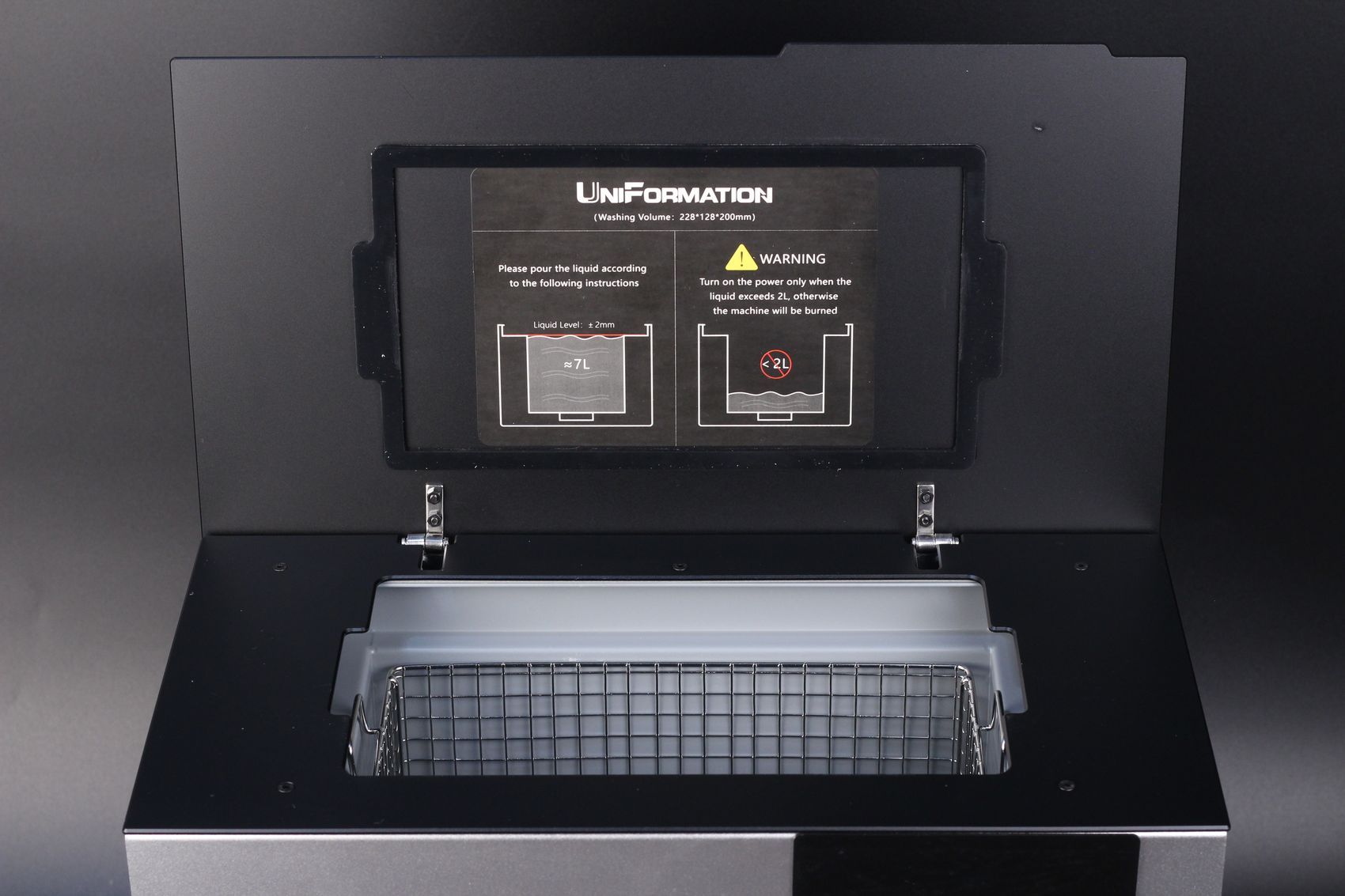
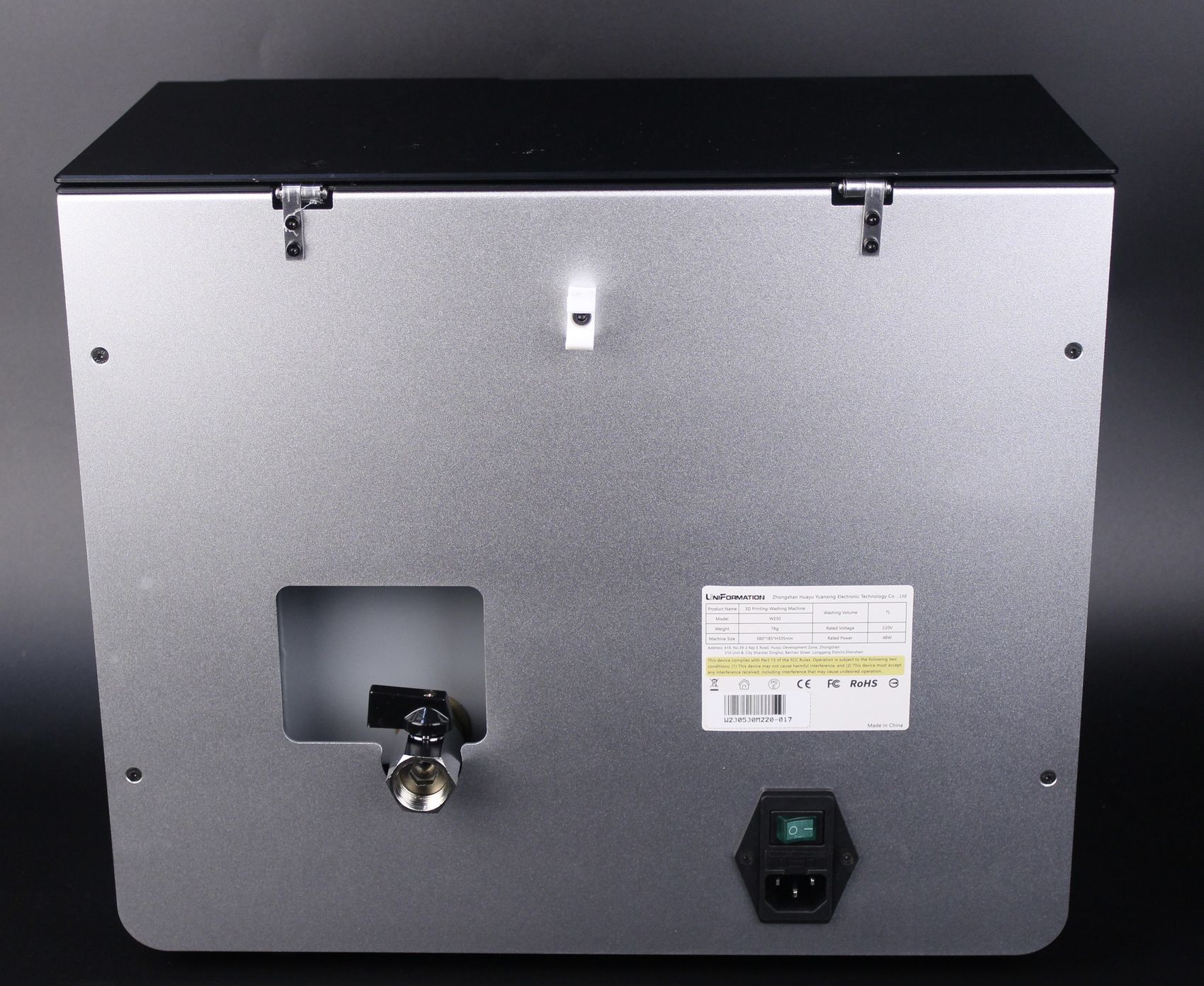
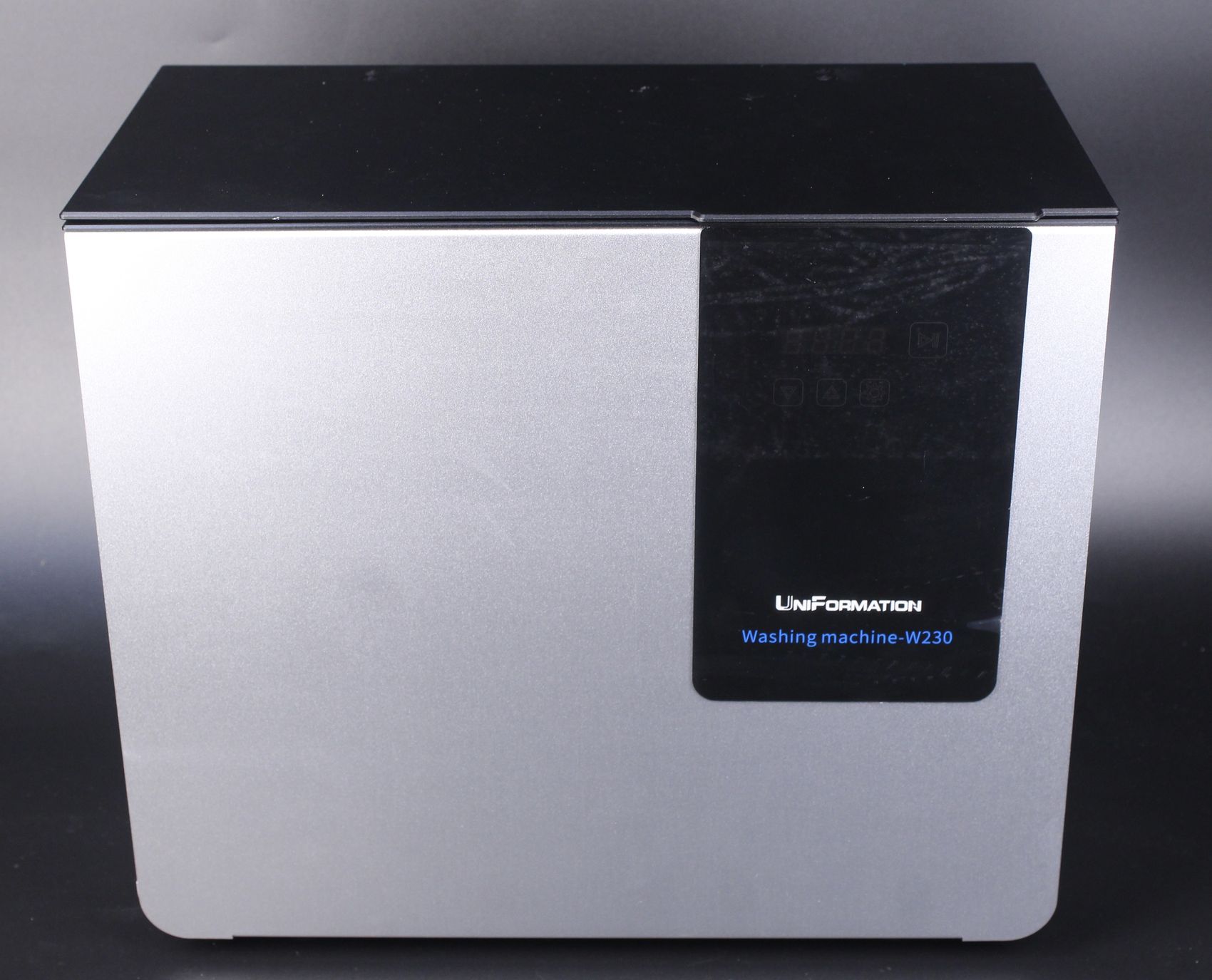
Overall, the W230 Ultrasonic Cleaner from UniFormation is a mandatory purchase in my opinion, because it makes the entire workflow of printing and washing the models much easier to deal with. The price is also competitive, being somewhat similar to other ultrasonic cleaners of similar volume that can be purchased online.
UniFormation D265 Resin Curing Station
To cure the models, you can also use the UniFormation D256 Resin Curing Station. This unit is also metallic and pretty nicely done, but it feels like it doesn’t have the same high quality as the other two products.
The unit is made from sheet metal, and it has a transparent front to see the models during curing. The bottom rotating platform of the curing station is also transparent, which helps cure the models from all sides with the help of four UV LED strips.
There are two LED strips on the left and right side of the unit, a third is located on the bottom of the unit and the fourth is on top of the cover.
The default curing time for the unit is 3 minutes, but it can be adjusted according to your needs from the on-screen controls from the front of the unit.
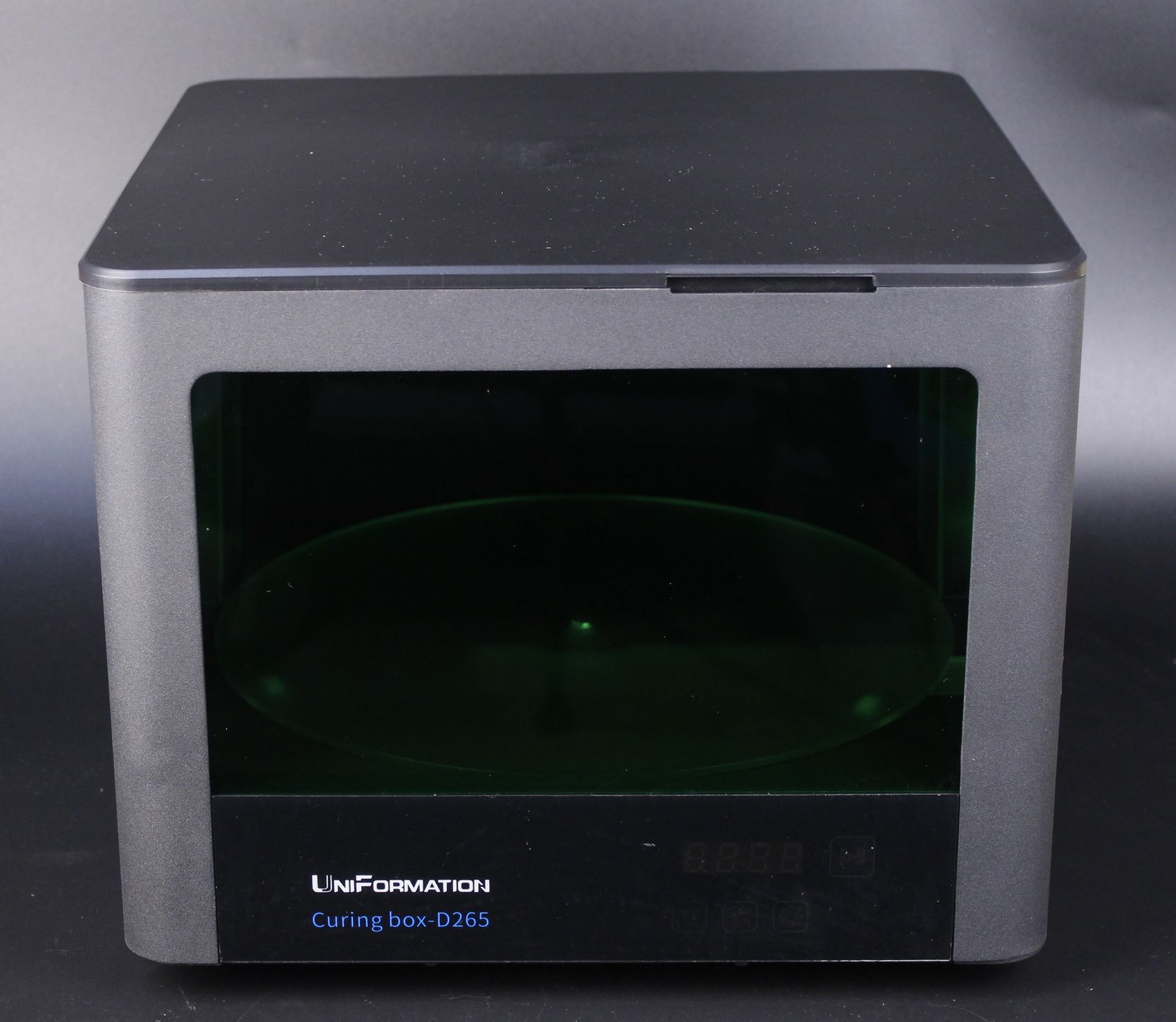
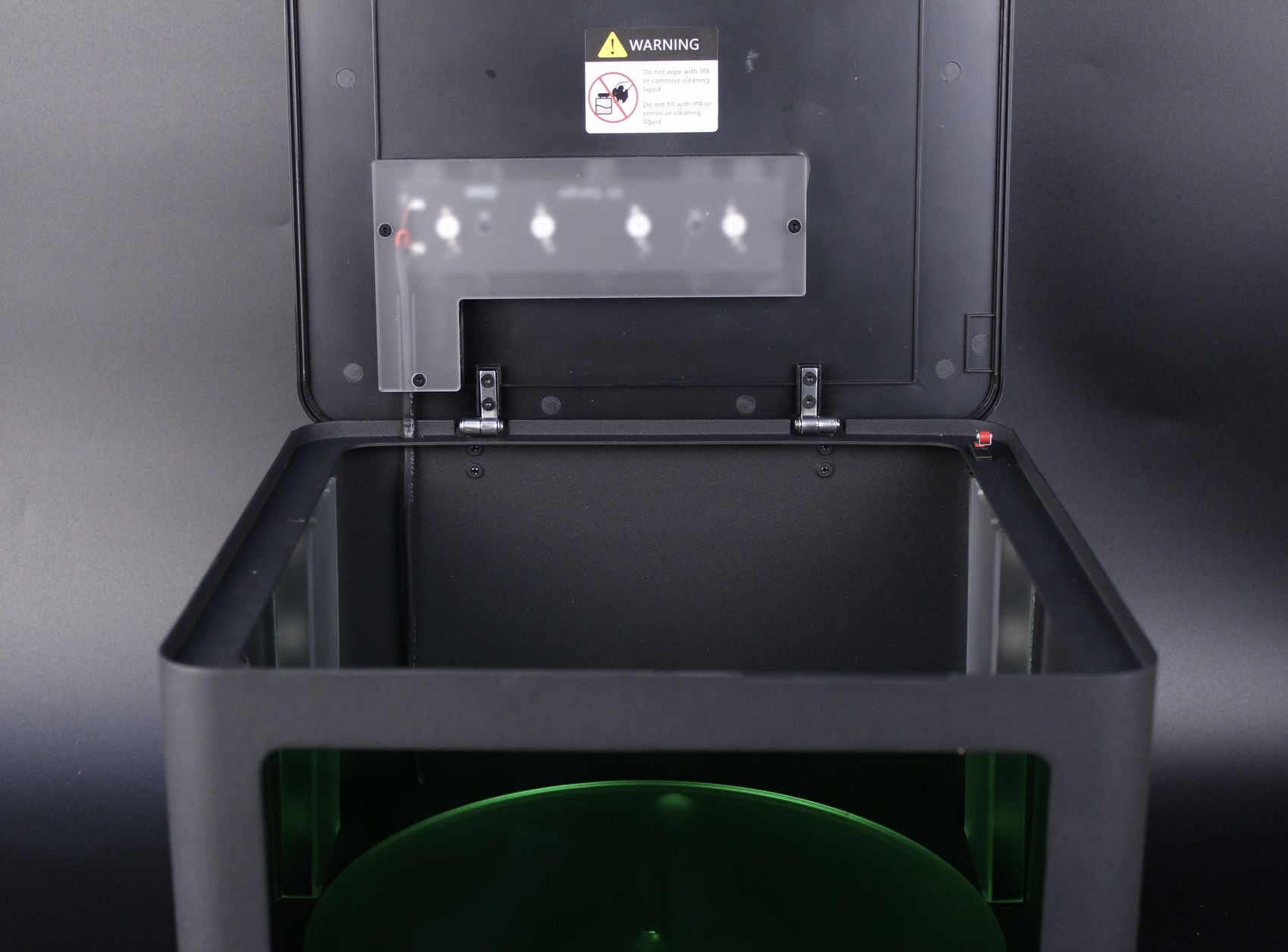
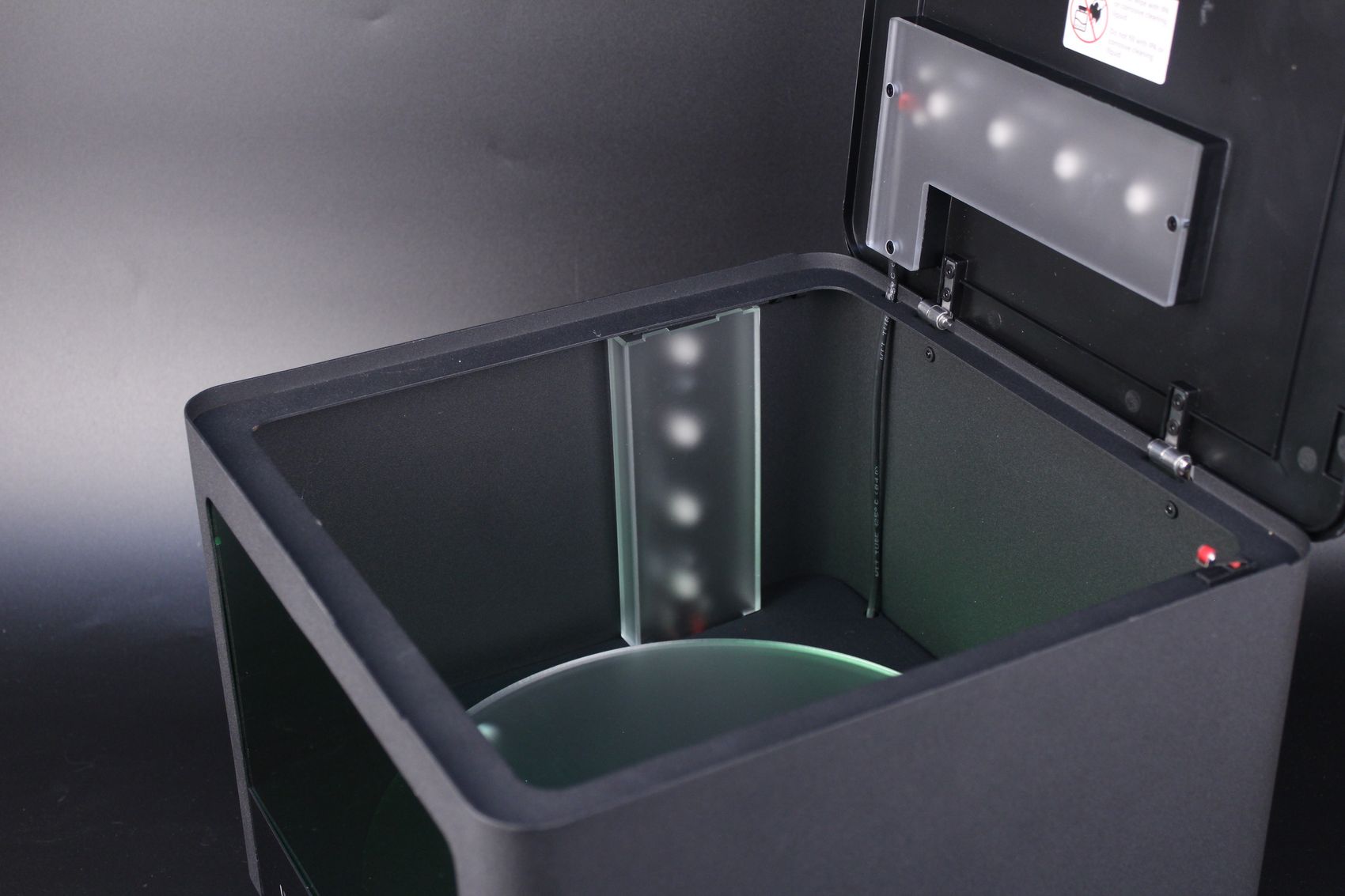
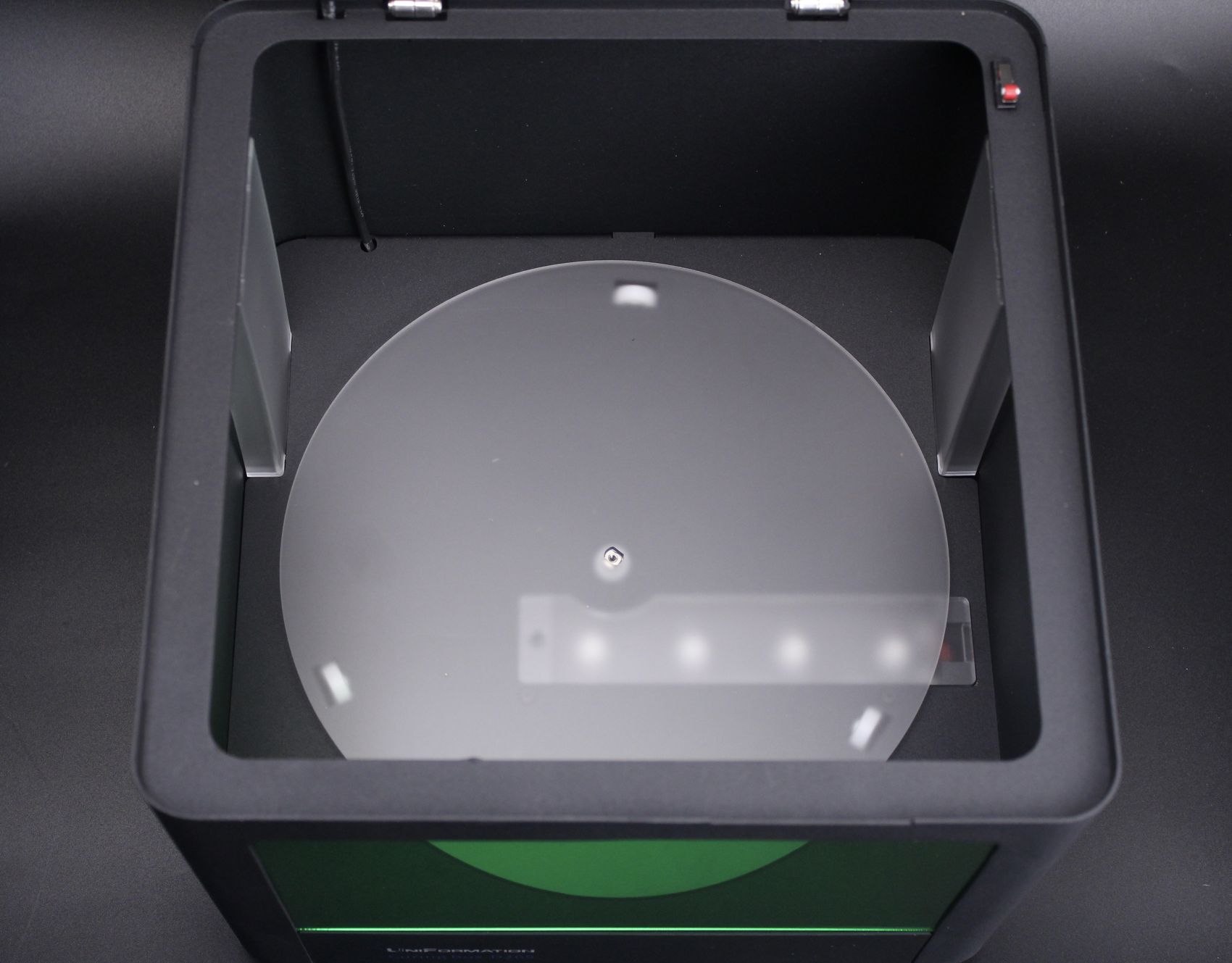
Overall, the D265 Resin Curing Station works as expected, and does its job. Considering the price of about 150$, it’s also not very expensive for what you get, but in my opinion, it would be better to purchase a secondary wash and cure station from other manufacturers because for just a bit more you can get 2-in-1 unit like the AnyCubic Wash & Cure Plus which gives you the possibility of using it as a secondary washing station to make sure the models are perfectly cleaned after using the W230 Ultrasonic Cleaner to do the first wash stage.
Test prints on UniFormation GKTWO
Babu Frik Bust
I started testing with the Babu Frik Bust from Fotis Mint sliced with the default settings in Lychee slicer for the Anycubic resin. While the print has been completed, the base and some of the back side of the bust are partially damaged due to the leveling issue I had. Overall, the quality of the print is good.
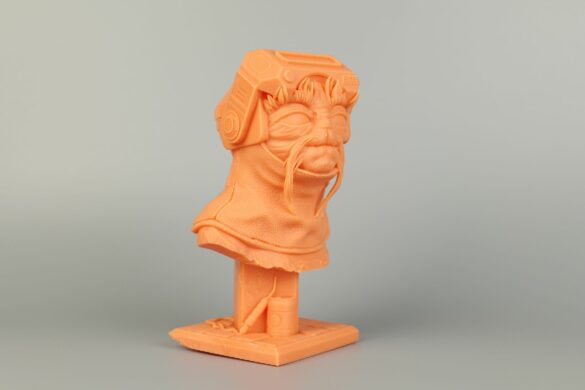
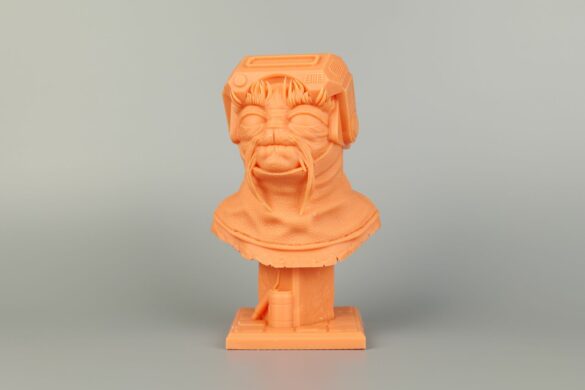
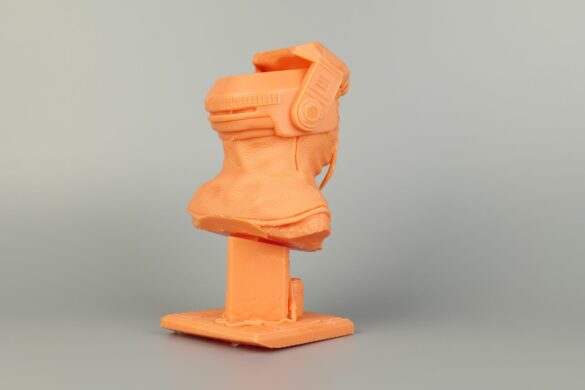
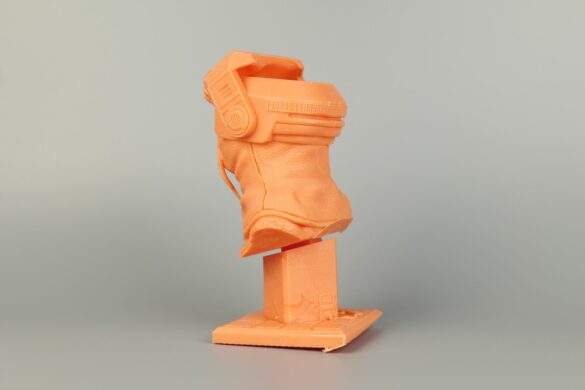
Butcher Bust
A second print is the Butcher Bust from Fotis Mint printed with the same settings. Again, the same problem with the bed being too close to the screen can be seen here even though I tried to level it before.
When the print started, the plate was too close and the Z-axis motor was skipping steps. But the print is pretty good and even if it has a bit of a problem in the back, it’s not easily seen.
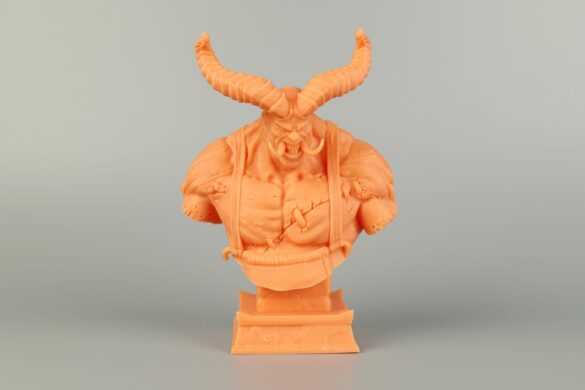
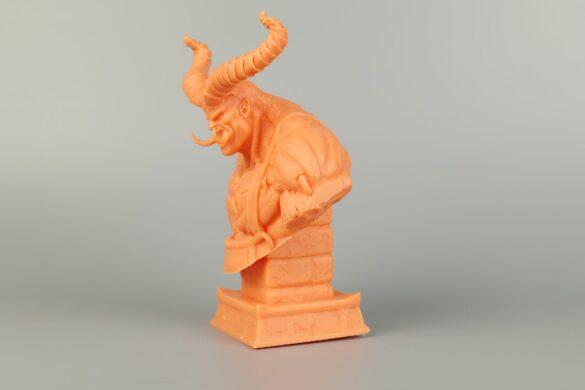
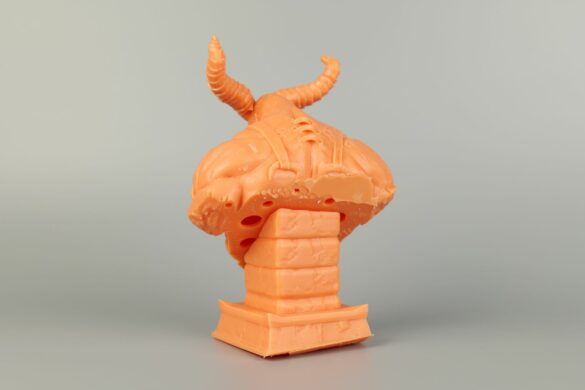
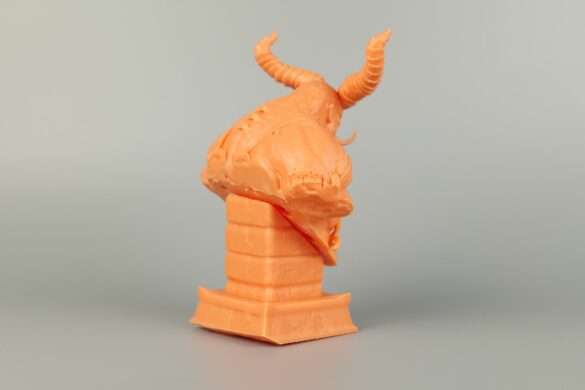
Lurtz Bust
A third model printed is Lurts Bust from Fotis Mint. This model was done after I tried yet again to level the print surface and while the damage is a bit less than the others, it is still visible.
Other than the leveling issue, the print quality results are great and can’t complain.
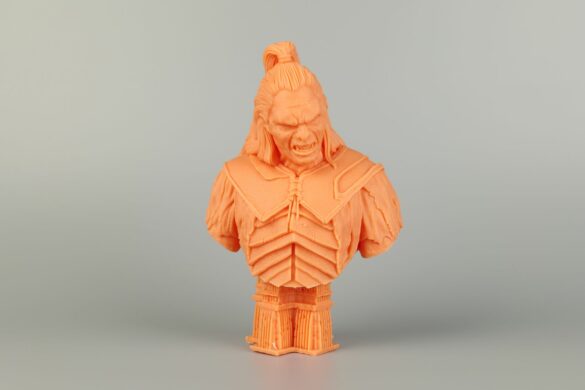
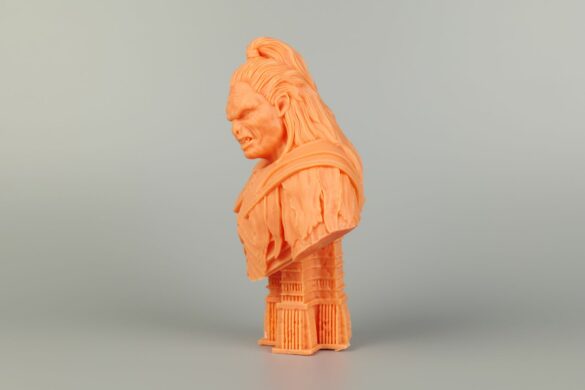
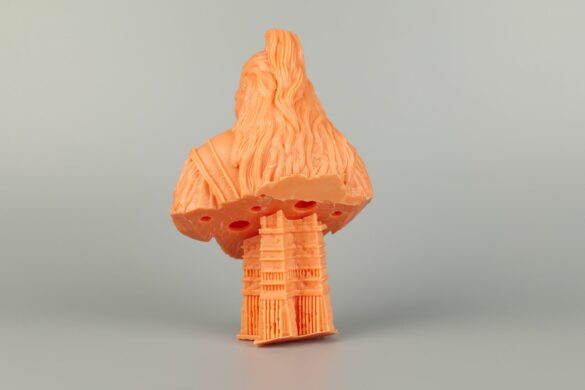
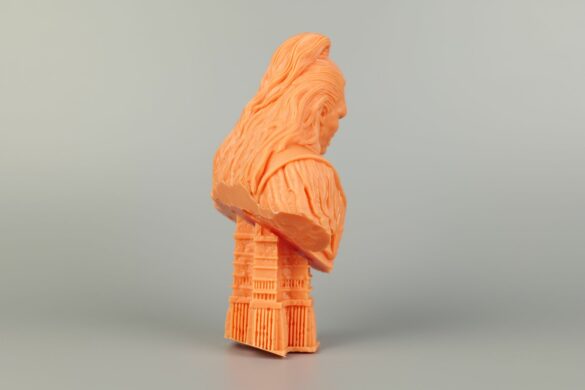
Sauron Bust
With the print surface leveled with 10 sheets of paper, I was finally able to get a perfect result, and you can see this in the Sauron Bust from Fotis Mint. All the intricate detail that was added to this model came out great, and overall the print looks amazing. There are small blemishes caused by my washing stations having some leftovers from the previous wash, but that’s my fault.
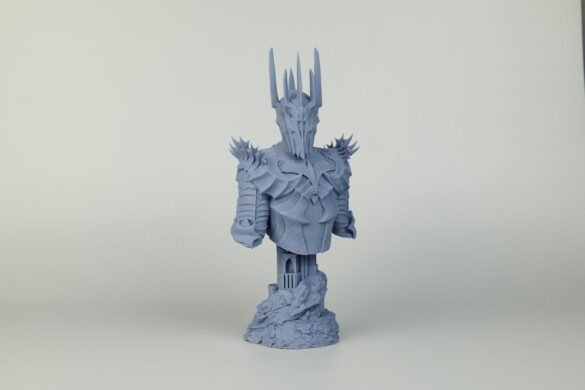
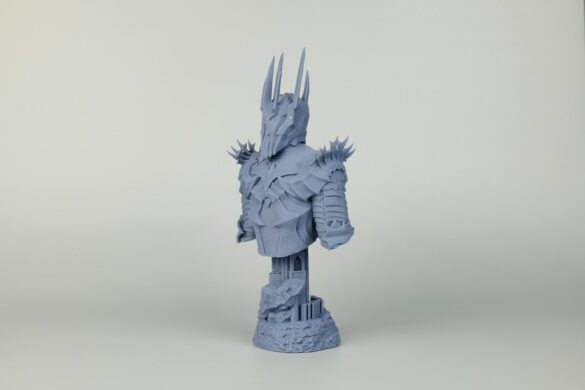
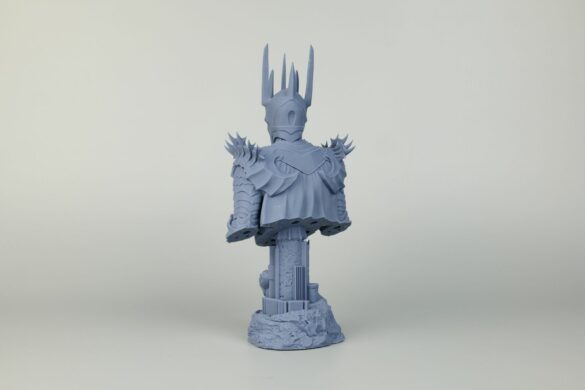
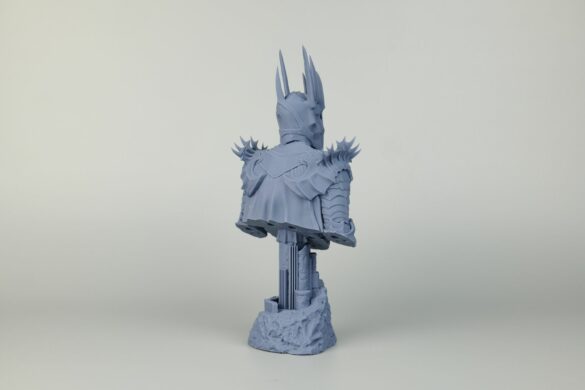
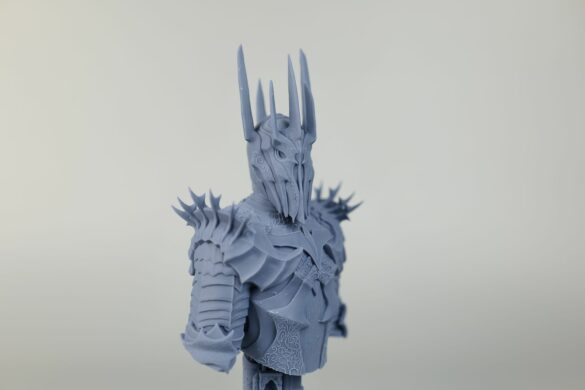
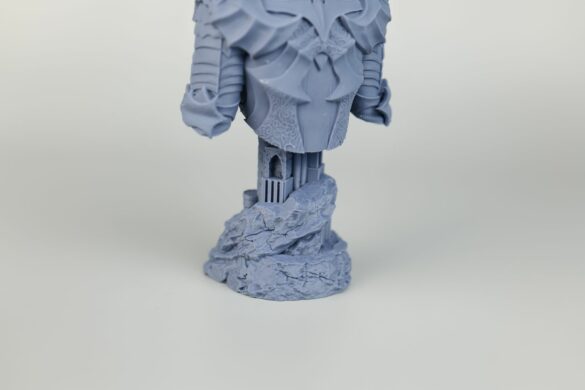
Leoric Bust
Finally, the test was completed with the Leoric Bust from Fotis Mint printed at the same time as Sauron. This means that a full plate was easily completed by the printer and It came out great from the first try.
If the print surface leveling issue had not occurred, the entire testing period would have been flawless.
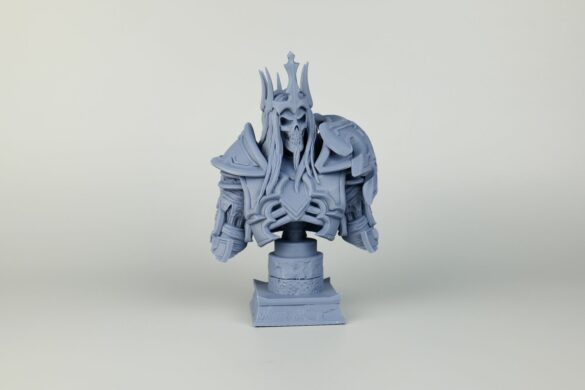
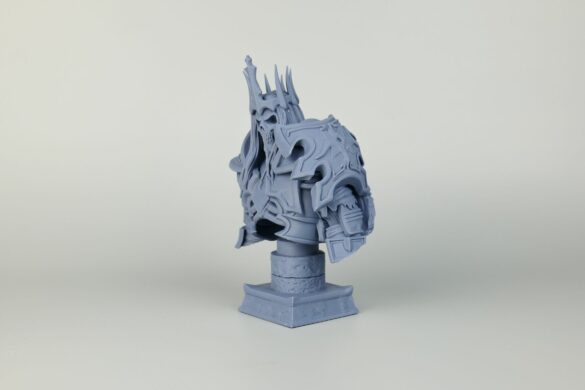

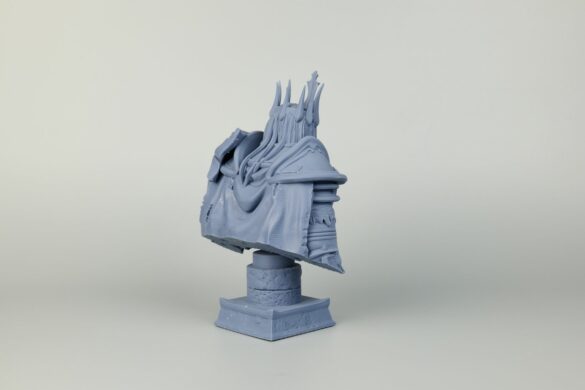
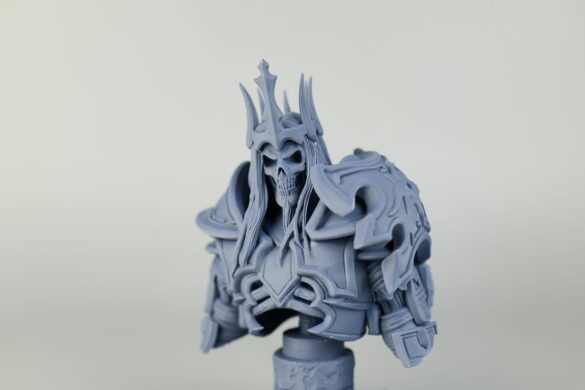
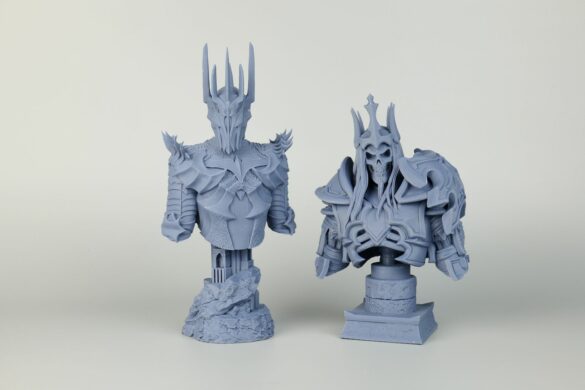
Conclusions: Is the UniFormation GKTWO worth it?
I haven’t tested a lot of resin 3D printers lately, but the UniFormation GKTWO is one of the best. When it comes to print quality, most resin 3D printers work as expected, but the GKTWO earns extra points due to how easy it is to use the printer while also having the entire printing process made easier with their W230 Ultrasonic Cleaner and the D265 Resin Curing Station.
If you are looking into printing with resin a lot, then I have no problem recommending the GKTWO. It manages to give excellent results while also making the process easier due to the smart design of the printer vat, build plate, and the included resin heating option.
The 8K resolution of the screen is also more than enough in my opinion, and I don’t see a good reason to look into getting a 12K printer as the print quality difference can only be seen with magnification tools.
What didn’t really convince me was the D265 Resin Curing Station. While it’s a decent curing station, I would recommend you purchase a secondary wash and cure station to have a 2-stage cleaning solution which works much better and you won’t need to constantly replace the used-up IPA.
As usual, I recommend checking other reviews of the UniFormation GKTWO before making a purchase decision, but if you have the budget for it, and want a more premium printer compared to other offerings then I believe the GKTWO can be a good purchase.
UniFormation GKTWO Rating
Design
Specs
Noise Levels
Ease of use
Print Quality
Price
The UniFormation GKTWO is an excellent resin 3D printer with great features and easy to use design. The print quality is also great living up to the expectations set by a higher price tag than cheaper printers.
Where to buy the UniFormation GKTWO?
The UniFormation products can be purchased from the following sites:
UniFormation GKTWO
UniFormation Store – 80 USD OFF with code 3dpbeginner
Amazon
AliExpress
UniFormation W230 Ultrasonic Cleaner
UniFormation Store
Amazon
AliExpress
UniFormation D265 Resin Curing Station
UniFormation Store
Amazon
AliExpress
I recommend checking out the Discount Codes page before purchasing. I regularly update the article with discount codes for various online shops, and you might find one for this particular model.
The UniFormation GKTWO with the W230 Ultrasonic Cleaner and the D265 Resin Curing Station were provided free of charge by UniFormation for the purpose of this review. While the article includes affiliate links, all opinions are my own. Nobody reviewed the article before it was posted, following the Review Guidelines.
Liked it?
|
|

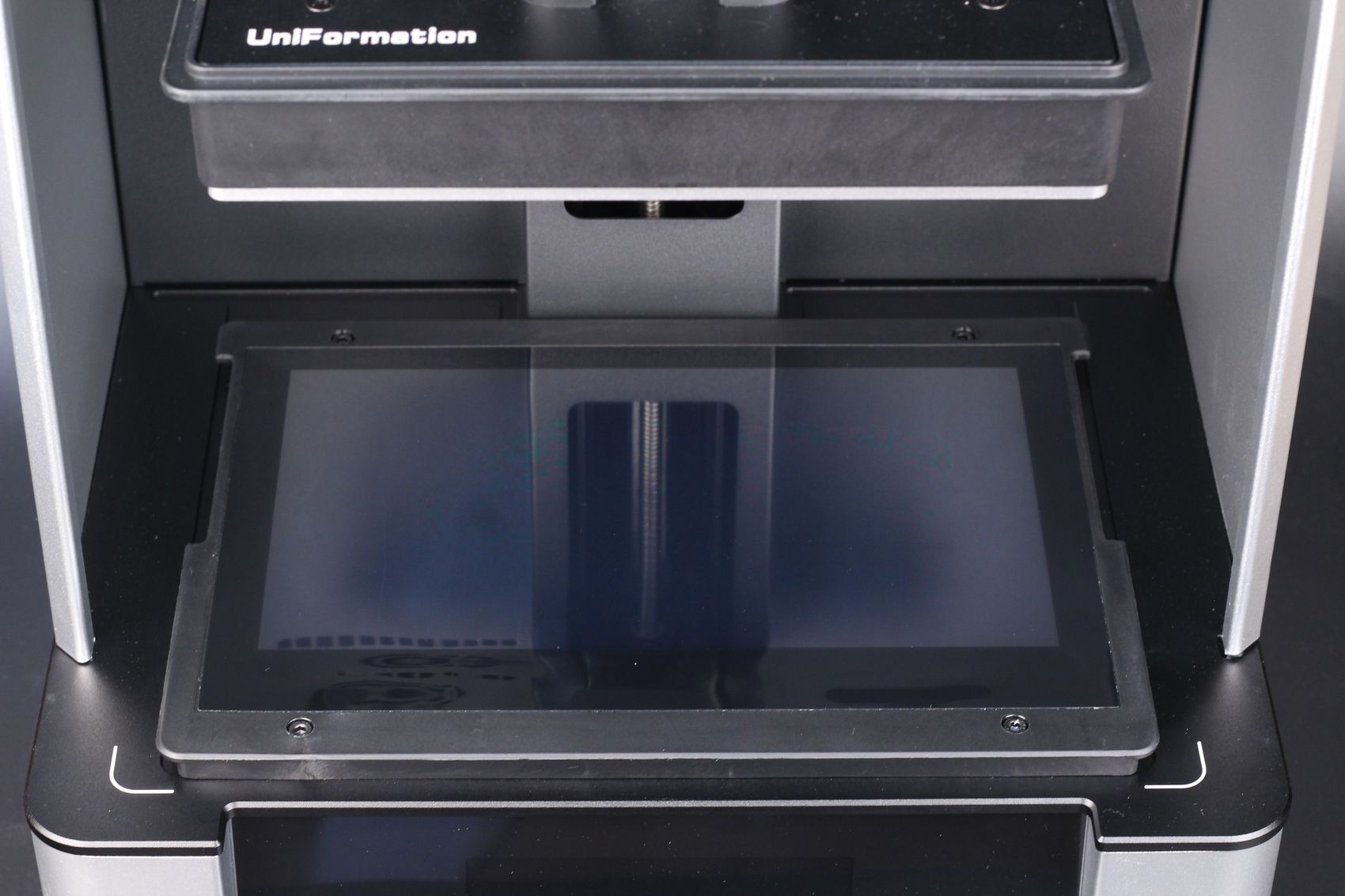
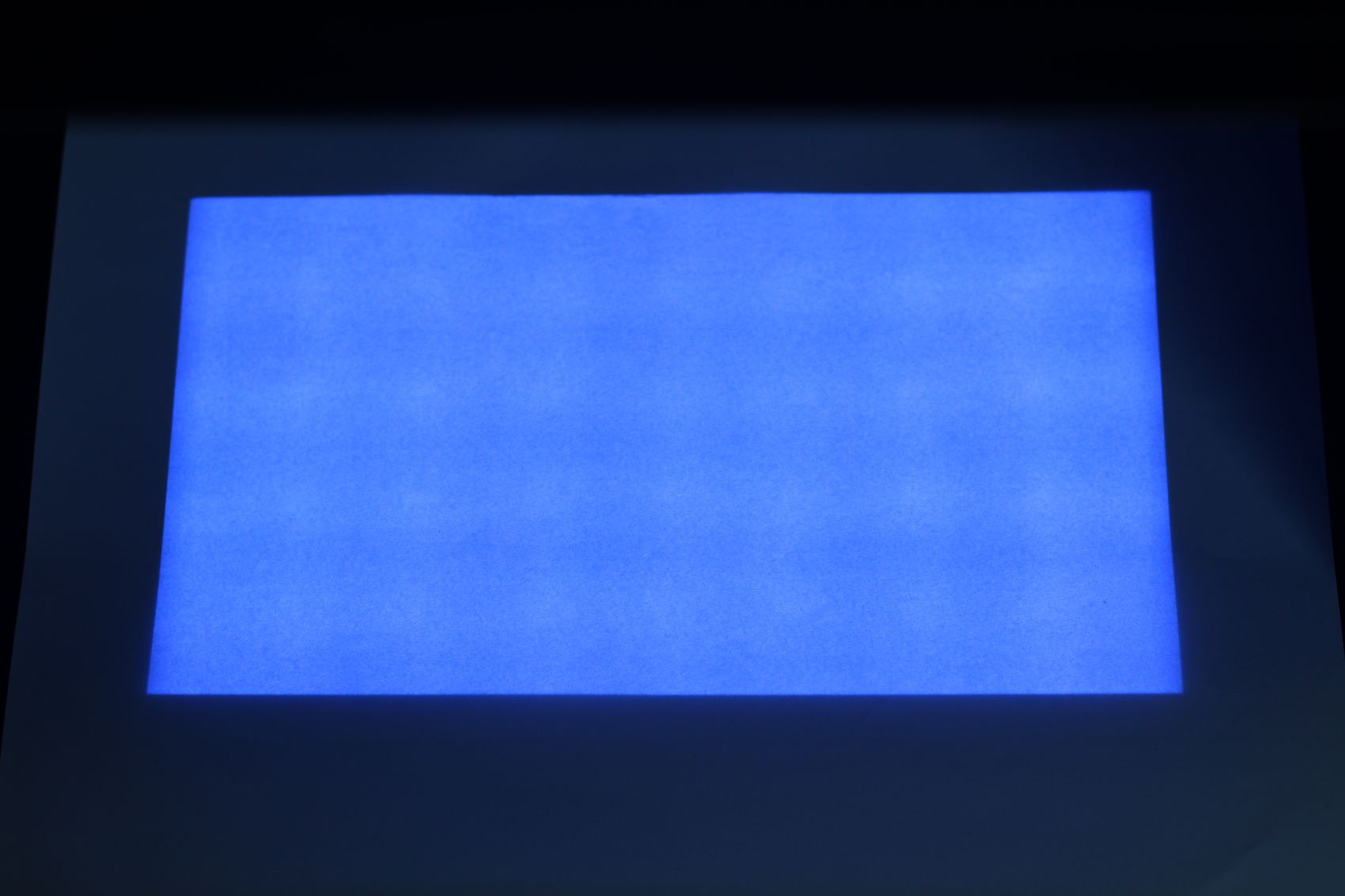
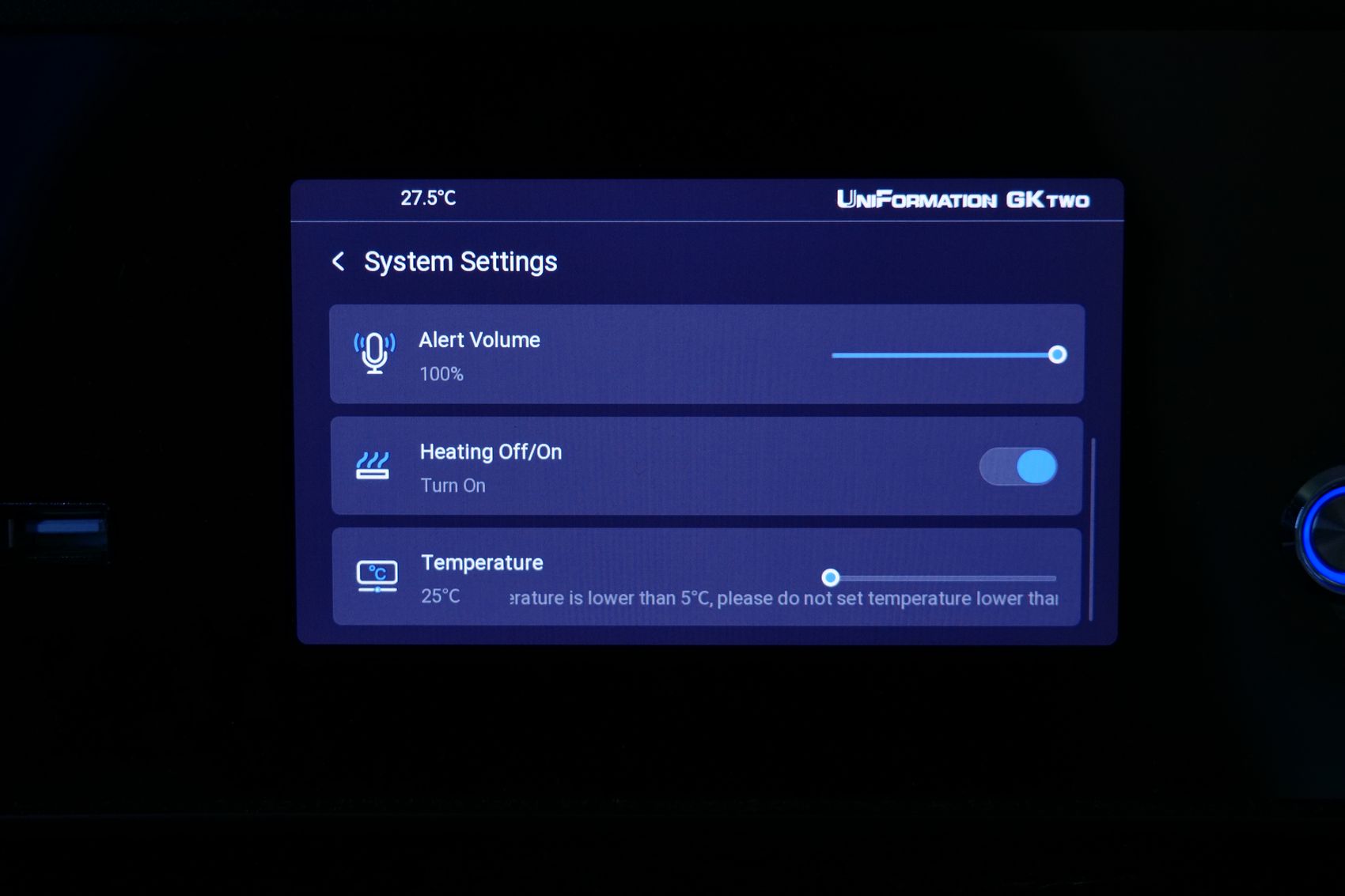
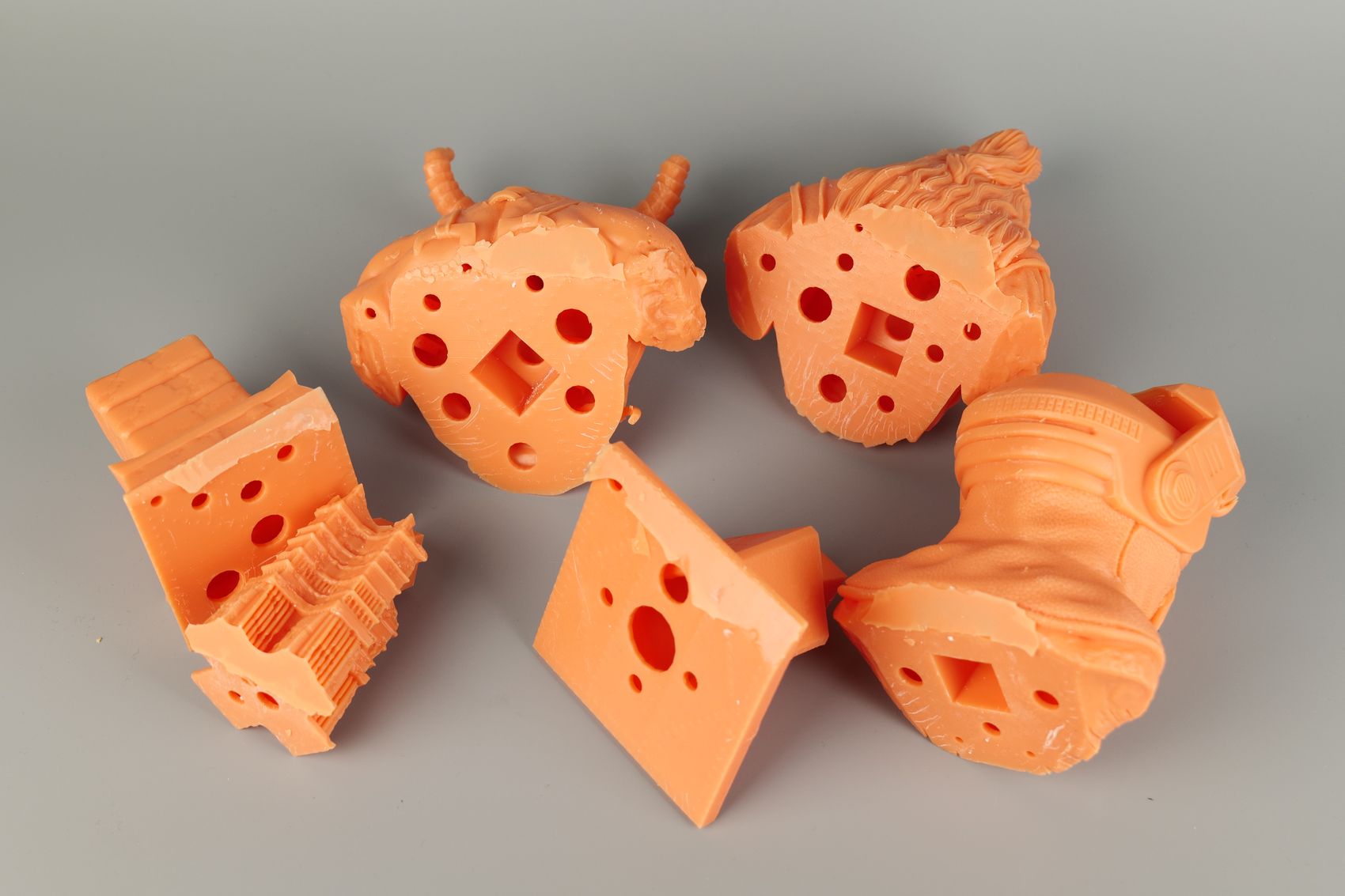
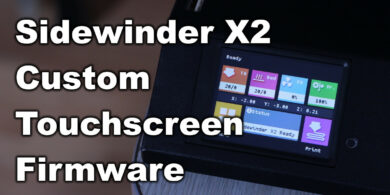
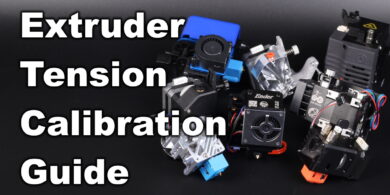
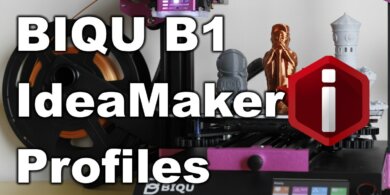
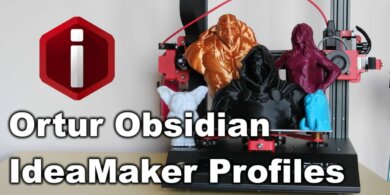
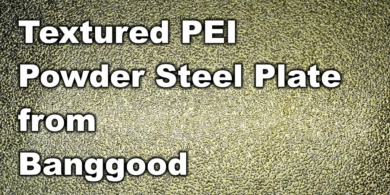
You can leave a comment for this article on the 3DPrintBeginner Forum